

Guide to Conducting Healthcare Facility Visits
by Craig Zimring, Ph.D. Georgia Institute of Technology
Published by The Center for Health Design, 1994
INTRODUCTION
A major medical center is building a new diagnostic and treatment center that will include both inpatient services and expensive high technology outpatient services The center is considering whether to provide day surgery within the diagnostic and treatment center or in a freestanding outpatient facility. They are facing a dilemma. If they locate the day surgery center separately, they can use lower-cost construction. If they combine the functions, they can use the spare capacity that will likely become available in the inpatient operating rooms. This is especially important as outpatient procedures become increasingly complex. The center wishes to evaluate sites that currently operate in fully separate facilities versus ones that provide separate outpatient and inpatient reception and recovery facilities, but share operating rooms.
A large interiors firm has been contacted to conduct a visit of several new children’s hospitals in the Northwest. Eager to get the commission from this major hospital corporation to renovate the interior of a large children’s hospital, the firm arranges visits of hospitals it has designed as well as two designed by other firms.
An architecture firm is renovating a large medical laboratory in an existing building which has a minimal 11-foot-3-inch floor-to-floor height. Concerned that the client may not understand the implications of this tight dimension-which means that the fume hood ventilation system can not easily be installed within this space-the architects arrange visits of other labs with similar floor-to-floor heights, change in healthcare and society is rapid and increasingly unpredictable, bringing an unprecedented level of risk for healthcare organizations facing new projects. This guide discusses a specific tool that healthcare organizations and design professionals can use to help manage uncertainty: the facility visit. In almost every healthcare project someone-client, designer, or client-design team-visits other facilities to help them prepare for the project. A probing, well structured, and well run visit can highlight the range of possible design and operational alternatives, pinpoint potential problems, and build a design team that works together effectively over the course of a design project. It can help a team creatively break their existing paradigms for their current project and can provide a pool of experience that can inform other projects. All of these can help reduce risk for healthcare organizations.
However, current facility visits are often ineffective. They are frequently conducted quite casually, despite the rigor of much other healthcare planning and design. Visits are often costly—$40,000 or more-yet they often fall short of their potential. Sites are often chosen without careful consideration, little attention is given to clarifying the purpose or methods of visits, there is often little wrap-up, and frequently no final report is prepared. Not only is the money devoted to the visit frequently not used most effectively, the visit presents important opportunities to learn and to build a design team. These opportunities are too often squandered.
This guide focuses on what a facility field visit can accomplish and suggests ways to achieve these goals. Although a facility visit may occur in a variety of circumstances, including the redesign of the process of healthcare without any redesign of the physical setting, this guide focuses on situations in which architectural or interior design is being contemplated or is in process.
SCOPE OF THE RESEARCH
The goals of this project were to learn about the existing practice of conducting healthcare facility visits, to learn about the potential for extending their rigor and effectiveness, and to develop and test a new approach. We interviewed over 40 professionals in the fields of healthcare and design from every region of the US, including interior designers, architects, and clients who had participated in design projects, and healthcare professionals who conduct visits of their own facilities. We sampled professionals from large and small design firms, and from large and small medical organizations. To get a picture of both “average” and “excellent” practice we randomly selected members from professional organizations such as the AIA Academy on Architecture for Health and the American Society of Hospital Engineers, and augmented these with firms and individuals who were award winners or were recommended to us by top practitioners. We developed a multi-page questionnaire that probed the participants’ experiences with visits, including their reasons for participating, their methods, and how they used the information produced. We faxed each participant the questionnaire, then followed up with an interview on the phone or in person. The interviews averaged about one-and-a-half hours in length. Every person we initially contacted participated in an interview. Everyone in our sample had participated in some sort of visit of healthcare facilities within the past year.
After conducting the interviews we developed, field tested, and revised a new facility visit method, which is presented in this guide. Throughout this process we conferred with select members of the Research Committee of The Center for Health Design and the Project Advisory Board.
GOALS OF FACILITY VISITS
There are many reasons for doing a facility visit and many different kinds of visits. However, visits roughly fall into three categories: specific visits, departmental visits and general visits. Specific visits focus on particular issues such as the design of patient room headwalls, nursing stations, or gift shops; departmental visits focus on learning about the operations and design of whole departments such as outpatient imaging or neonatal intensive care; general visits are concerned with issues relevant to a whole institution, such as how to restructure operations to become patient-focused. Usually, departmental and general visits occur during programming or schematic design; specific visits often occur during design development, when decisions are being made about materials, finishes and equipment.
More broadly, there are several general reasons for conducting visits: learning about state-of-the art facilities; thinking about projects in new ways; and creating an effective design team.
LEARNING ABOUT STATE-OF-THE-ART FACILITIES
Visit participants want to learn what excellent organizations in their field, both competitors and other organizations, are doing. Participants are often particularly interested in learning how changes in business, technology or demographics, such as increased focus on outpatient facilities or increased criticality of inpatients, might affect their own operations and design. For example, in Story 1, below, a UK team was interested in grafting US experience onto a UK healthcare culture. In another example, hospital personnel at Georgia’s St. Joseph’s Hospital visited five emergency rooms over the course of several weeks before implementing an “express” service of their own. According to planner Greg Barker (Jay Farbstein & Associates, CA) they “use site visits as a method of exposing the clients to a broader range of operating philosophies and methods.” This gives the clients and design professionals a common frame of reference on which to base critical operational and design decisions.
William Headley, North Durham Acute Hospitals, UK
Traditionally, hospital design in the UK has been established centrally, with considerable emphasis placed on standard departmental areas and on a standardized planning format known as “Nucleus.” The 20-year-old Nucleus system is based on a standard cruciform template of approximately 1,000 square meters housing a multitude of departments, which can be interlinked to provide the nucleus of a District General Hospital.
Durham wished to develop a hospital that in its vision would meet the challenges of the 21st Century, and produce a custom-designed hospital solution built to suit the needs of the patient, not just individual departments.
The brief has, therefore, to be developed from a blank sheet of paper and not from standard guidelines. It is also the Trust’s objective to have the brief developed by staff from the bottom up. The purpose of the study tour was to allow frontline staff the opportunity to experience new ideas firsthand and talk to their medical counterparts about some of the philosophies of patient-focused care and to input their findings into the briefing process. We acknowledged the differences in the US and UK healthcare systems, but were interested in ensuring that best US practices, including the patient focused approach, facilities design, and the use of state of the art equipment, was studied and subsequently tailored to suit the new North Durham hospital.
THINKING ABOUT A PROJECT IN A NEW WAY
Participants who are currently engaged in a design or planning project are concerned with using visits to advance their own project. They use a visit to analyze innovative ideas and to help open the design team to new ideas. At the same time they are interested in building consensus on a preferred option. In Story 2, below, a hospital serves as a frequent visit host because it shows how special bay designs can be used in neonatal intensive care, and participants can consider how these designs apply to their current project. Other visit organizers see a visit as an opportunity for focusing the team on key decisions that need to be made, or to help the team focus in a systematic way on a range of strategic options and critical constraints. The visit exposes each team member to a variety of ways of accomplishing a similar program of requirements and thus starts the debate on how to achieve the best results for the facility being designed.
Georgia Brogdon, Vice President Operations, Gwinnett Women’s Pavilion, GA
We get visitors at our facility about once per month. Right now the NICU (neonatal intensive care unit) is the most frequently visited location. The main reason is that Ohmeda uses our unit as a showcase for a special design of NICU bays. People want to see it because most think that Hill Rom is the only vendor of this type of equipment.
Early on, we were also one of the only state-of-the-art LDR facilities around. So if people wanted to visit an LDR unit, they had little choice but to come here. Now, however, people come to see us because we are a freestanding yet still attached facility. Over time the visits have evolved away from the design of the facility and more into programming, services, and operational issues.
We give three types of visits: 1) overview visits for lay people who just want to come see the area; 2) functional visits for other hospital people or architects who want to see the LDR design, mother/baby floor, NICU design, etc.; 3) operational flow visits to learn how the LDR concept impacts operations. In general, we start the visitors wherever the patient would start in the facility.
To arrange a successful visit of our facility, we need to know the interests of the visitors; then we can focus the schedule on that. Also knowing who they are bringing is helpful. You need to have their counterparts available. The types of information needed to conduct facility visits are: 1) what specific operational information to ask for in advance-size, number of rooms, number of physicians, staffing, C-section rate, whether they are a trauma center; 2) how to prepare for the visit; 3) who to bring. We’ve found that periodically the visitors are disappointed because they didn’t bring enough people. Better to have too many than not enough.
CREATING AN EFFECTIVE DESIGN TEAM
Participants use visits as an opportunity for team building. Many visits are conducted early in a design project by a team who will work together for several years. The visit provides participants a useful opportunity to get to know each other and to build an effective team. As Story 3 illustrates, clients often look to a visit to see how well designers can understand their needs; designers use it as a way to learn about their clients and to mutually explore new ideas. A visit can also provide an opportunity for medical programmers to work with designers and clients. This is particularly important if programming and design are done by different firms.
Many visit participants focus on interpersonal issues: spending several days with someone helps build a personal relationship that one can rely on during a multi-year project. A visit also provides the opportunity to achieve other aspects of team building: clarifying values, goals, roles and expertise of individual participants; and identifying conflicts early so they can be resolved. One result for some teams is that it establishes a common vocabulary of operational and facility terms translated to the local healthcare facility.
Bing Zillmer, Director Engineering Services, Lutheran Hospital, La Crosse, WI
Conducting a facility field visit is an opportunity to have that one-on-one contact and find out if the architect “walks the talk or talks the walk.” The biggest benefit is in finding out how the visit team of the architectural firm has been assembled: to see their level of participation, and how they have interacted with and listened to the clients and the hosts. What we look for in a consultant is not a “yes man”; we look for someone who knows more about existing facilities than we do. Our key concerns are how the team worked together, how they listened.
Dennis C. Lagatta, Vice President, Ellerbe Becket, Washington, DC
The main reason for conducting a visit is to settle an issue with the client. The clients usually have only two frames of reference: the current facility and the one where they were trained. These two frames of reference are hard to overcome without a visit. We conduct visits to help settle an issue between various groups within the institution. The visit process tends to be a good political way to illustrate a problem or a solution to a problem. A good example is when you have a dispute between critical care physicians and surgeons. Both parties may be unwilling to compromise. Usually a visit will be a good way to defuse this conflict.
James W. Evans, Facilities Director, Heartland Health System, St. Louis, MO
Responding to the question, what kinds of team-building activities were conducted before the actual visit took place? The functional space program stage is where you start building a team. Functional space programming is a narrative of what you want to do. If the programming includes a laboratory or some other specialty area, you would also want to have the consultant (if you are using one) involved in this process. Between blocks and schematics is when you want to go on any visits. By working together and staying together through big and small projects, you develop a lot of rapport and credibility.
Les Saunders, Nix Mann And Associates, Architects, Atlanta, GA
In the case of marketing visits, we try and present our unique abilities to our clients and to get to know each other better, Our visits are generally tailored to what the client group is trying to accomplish. Our functional experts will go on the visit so they can get to know the client and try to enhance “bonding.”
Facility visits allow healthcare organizations and design professionals to address several important trends in healthcare.
- A visit allows a team to understand the experience of stakeholders who they do not currently serve, and to examine the design and operations of facilities that are more customer-oriented.
- Social changes are resulting in some stakeholder groups gaining importance, such as outpatients involved in more complex procedures, higher acuity inpatients, older people, or non-English speakers.
- A visit can provide quantitative and qualitative data that support future decision making.
- Tighter budgets, shorter design and construction schedules and more complex projects are requiring design teams to form more quickly and work more effectively.
- A visit can be an effective tool for building a design team early in a design project.
FALLING SHORT OF THEIR POTENTIAL
In a design project, the client healthcare organization generally pays for a visit, either directly or as a part of design fees. Do healthcare organizations usually get good value for their investment? Do visits generally achieve their ambitious goals of learning about competition and change, moving the design project along, and building teams? We found very different answers. Despite the usual rigor of healthcare planning and programming, many current visits are very casual. Whereas some planners of visits do careful searches of available facilities to fit specific criteria, most choose sites to visit in other ways— sites participants happen to already know because they have been written about in magazines, or sites where there is a contact that someone on the team knows. Though these ways of choosing sites may be appropriate, they raise a question as to whether most participants are visiting the best sites for their purposes.
In many cases visit teams simply do not spend much time structuring the visit. Most teams do not even meet in advance to decide the major foci of the visit. We did not find many groups who use checklists or sets of questions or criteria when they go into the field. Whereas some teams compile the participants’ notes, and one team actually created a videotape in a large project, most teams do not create any kind of written or visual record of their visit. Many teams hold no meeting at the end to discuss the implications of the visit, although many participants felt that they emerged in subsequent programming or design meetings.
Despite the apparent casualness of these visits, designers and clients alike almost without exception felt they were a valuable resource.
Simply visiting a well-run facility can be vivid and exciting. It is fascinating to see how excellent competitors operate, to talk to them and learn of their experience. (It is also an excellent opportunity for administrators and designers to get away from their daily routine and talk to professional counterparts.)
But there are large opportunity costs in the way most current visits are run, and they represent considerable lost value for the healthcare organization, designer, and design project.
COMMON PITFALLS
Opportunity costs of current visits come from several common pitfalls.
LOW EXPECTATIONS LEAD TO LIMITED BENEFITS
Often, participants see field visits as a way to get to know other team members and simply to see other sites, but have no clear idea about what information can be helpful to the project at hand. They don’t think through how the visit can help the goals of their project or organization.
TOO BUSY TO PLAN
The planner of a visit faces multiple problems. Often the visit is seen as a minor part of the job of most participants and doesn’t get much attention in advance; schedules and participants may change at the last minute. In many cases, no one is assigned to develop the overall plan of the visit, and to ask if the major components-choice of sites, choice of issues to investigate, methods for visits, ways of creating and disseminating a report-match the overall goals of the organization and project. This is especially ironic because participants are often advocates of careful planning in other areas.
TOO FOCUSED ON MARKETING
Many visits, and especially designer-client visits, are billed as data gathering but are in fact aimed at marketing. A design firm may literally be marketing services or may be trying to get a client to accept a solution that they have already developed: marketing an idea. This may lead to an attempt to create a perfect situation in the facility being visited, one without rush, bustle, or everyday users and the information they can provide. For designer-client teams, we heard many designers complain that they couldn’t control their clients, that they couldn’t keep them focused on prearranged ideas or keep them limited to prearranged routes. (This is often the result of not enough advance work aimed at understanding what interests the participants have and not enough time spent building common goals.)
CLOSING THE RANGE OF DESIGN OPTIONS TOO EARLY
Many visits occur early in the design process or when an organization is considering significant change, a perfect time to consider new possibilities or address issues and solutions not previously considered. This timing, and the chance to see and discuss new options in a visit, presents an opportunity for a design team to open its range of choices and consider novel or creative alternatives. However, many visit participants feel strong pressures to “already know the answer” when they start the visit. Many designers and consultants feel that their clients do not want them to genuinely explore a range of options, that they were hired because they know the solution. Similarly, some medical professionals establish positions early to avoid seeming foolish or uninformed. As a result, the team may choose sites that bring only confirmation, not surprise, and people will be interviewed who bring a viewpoint that is already well established. This is not simply a matter of the individual personalities of people who set up visits, but rather a problem of the design of teams and the context within which they operate. It is often important for a design firm to show a client the approach it is advocating and for them to jointly explore its suitability for the client’s project. However, if the client expects a designer to know the answer before the process starts, rather than developing it jointly with the client, the designer is forced to use the visit to exhort rather than to investigate.
TOO LITTLE STRUCTURE FOR THE VISIT
Whereas no one likes to be burdened with unnecessary paperwork before or during a visit, it is easy to miss key issues if there is not an effort to establish issues in advance, with a reminder during the visit. Seeing a new place, with lots of activity and complexity, makes it easy to miss some key features. Many team members come back from visits with a clear idea of some irrelevant unique feature such as the sculpture in the hallway, rather than the aspect of the site that was being investigated.
INTERVIEWING THE WRONG PEOPLE
Often, out of organizational procedure or courtesy, a site being visited will assign an administrator or person from public relations to be the primary guide. It is almost always preferable to interview people familiar with the daily operations of the department or site.
MISSING CRITICAL STAKEHOLDERS
Almost every healthcare facility is attempting to become more responsive to customers, both patients and “internal” customers such as staff. Patients often now have a choice of healthcare providers, and staff are costly to replace. Despite these trends, many visits miss some key customer groups such as inpatients, outpatients, visitors, line staff, and maintenance staff. It is very important that these groups or people who have close contact with them be represented in visits.
A DESIGNER PROVIDING TOO MUCH DIRECTION DURING A DESIGNERCLIENT VISIT
In an effort to control the outcome, a designer may attempt to ask most of the questions during interviews. In addition to the problem of focusing exclusively on “selling” ideas described above, clients do not like to feel that their role is usurped.
MISSING OPPORTUNITIES FOR TEAM BUILDING
Teams are most effective when everyone understands the values, goals, expertise and specific roles of others on the team. Teams are also most effective when the team understands the process and resources of the team, the nature of the final product, how the final product will be used: who will evaluate it, and by what criteria the success of the product will be evaluated. Although management consultants routinely recommend making such issues explicit at the beginning of team building, we found few visit teams that deal with these issues directly. Many teams do not even get together before a visit to discuss these issues.
NOT ATTENDING TO CREATING A COMMON LANGUAGE
Multidisciplinary design teams often speak different professional languages and have different interests and values. Designers are used to reading plans and thinking in terms of space and materials; healthcare administrators are used to thinking in terms of words and operational plans. Unless a field visit team is conscious about making links between space and operations, there can be little opportunity to establish agreement.
LACK OF AN ACCESSIBLE VISIT REPORT
Most current visits produce no report at all; some produce at least a compilation of handwritten notes. We heard a repeated problem: no one could remember where they saw a given feature.
CHAPTER 1: MAJOR TASKS
The healthcare facility visit process has three major phases, divided into specific team tasks that are conducted before, during, and after a visit. These phases, and the 13 major tasks that comprise them, are below. The process we propose is quite straightforward, but compared to most current visits it is more deliberate about defining goals, thinking through what will be observed, preparing a report, and being clear about the implications of the visit for the current design project.
PREPARATION
TASK 1. SUMMARIZE THE DESIGN PROJECT
In this task the project leader or others prepare a brief description of the goals, philosophy, scope, and major constraints overview of the design project that the visit is intended to aid. It should include the shortcomings that the design project is to resolve: space limitations, operational inefficiencies, deferred maintenance, etc.
The overview helps focus the facility visit, and can be provided to the host sites to help them understand the perspective of the visit. This summary should be brief, only a few pages of bulleted items, but should clearly identify the strategic decisions the team is facing. For example, a team may be considering whether to develop a freestanding or attached woman’s pavilion. It is also important to identify key operational questions in the project summary. Focusing on design solutions too early may distract the team from more fundamental questions that need to be resolved. The purpose of the summary is to establish a common understanding of goals, build a common understanding of constraints, and allow the visit hosts to prepare for the visit.
The summary of the design project may focus on several topics:
- How do these critical purposes link to key business imperatives, such as “broadening the base of patients” or “allowing nurses to spend more time delivering patient care”?
- What measurable or observable aspects of the design relate to these key purposes? For example, one team may be interested in whether carpeting leads to increased cleaning costs or increased infection rates; another team may be interested in visitor satisfaction with a self-service gift shop.
Key issues in summarizing the design project:
- It should identify the full range of stakeholders who affect the current design.
Note: Many visits ignore this critical up-front work. Depending on the schedule and scope, the summary can be circulated to the team in advance of the brainstorming meeting.
TASK 2. PREPARE BACKGROUND BRIEF
More than most building types, healthcare facilities have a large body of literature providing descriptions of new trends, research, design guidelines, and post-occupancy evaluations. Many design firms and healthcare organizations have this material in their library or can get it from local universities or medical schools. In this task the visit organizer creates a file of a few key articles or book chapters describing the issue or facility type being visited. These are then distributed to the team, allowing all team members to have at least a minimal current understanding of operations and design.
The team leader also prepares an Issues Worksheet. This is a one-page form that is distributed along with the Background Brief to all members of the visit team prior to their first meeting. (See Figure 2 for a sample Issues Worksheet.) It encourages them to jot down what is important to them, and to discuss issues with their coworkers. It works most effectively when the visit organizer adds some typical issues to help them think through the problem. Participants should be encouraged to bring the Worksheet with them to the team meetings.
Key issues in preparing the Background Brief:
- Providing a few current background articles on the kind of department, facility, or process being visited helps create at least a minimum level of competence for the team and helps establish a common vocabulary prior to the visit.
- The Issues Worksheet, along with the Project Summary and Background Brief, allows participants to develop a picture of the project and to brainstorm ideas.
TASK 3. PREPARE DRAFT WORK PLAN AND BUDGET
Once the team leader or others have summarized the design project and prepared the Background Brief, a draft work plan outlining the major components of the field visits can be prepared. At this stage, it is important to establish a tentative budget for the visit. It is also important to make sure that the major components of the draft work plan, such as choosing visit sites and developing critical issues, match the overall goals of the organization and project. The draft work plan provides a tentative structure for the field visits, which can be modified by other team members.
Key issues in preparing the draft work plan:
TASK 4. CHOOSE AND INVITE PARTICIPANTS
The effectiveness of the team is, of course, most directly related to the nature of the participants. Field visit teams are sometimes chosen for reasons such as politics, or as a reward for good service, rather than for their relevance to the project. For healthcare organizations field visit teams are usually most successful if they mix the decision makers who will be empowered to make design decisions with people who have direct experience in working in the area or department being studied. For design firms, teams are often most successful if they include a principal and the project staff. In both of these cases, the team combines an overall strategic view of the organization and project with an intimate knowledge of operational and design details.
Key issues in choosing participants:
- Participants should be chosen with a clear view of why they need to participate and what their responsibility is in planning, conducting and writing up the visit.
- Site hosts say that teams larger than about seven tend to disrupt their operations.
TASK 5. CONDUCT TEAM ISSUES SESSION
It is usually advisable to hold a team meeting early in the visit planning process to: 1) clarify the purposes and general methods of the field visit; 2) build an effective visit team by clarifying the perspective and role of each participant; 3) ‘identify potential sites, if the visit sites have not already been selected. Some resources and methods to select sites are discussed further in the next section, “Critical Issues in Conducting Facility Visits.”
The issues session is often a “structured brainstorming” meeting aimed at getting a large number of ideas on the table. (This is particularly important during departmental and general visits, and if team members don’t know each other.) The purpose is opening the range of possible issues rather than focusing on a single alternative.
This meeting is typically aimed at building a common sense of purpose for all team members, rather than marketing a preconceived idea. This meeting also serves the purpose of making critical decisions regarding the choice of sites and identifying who at the sites should be contacted.
Each participant should bring his or her Issues Worksheet along to the meeting. The initial task is to get all questions and information needs onto a flip chart pad or board before any prioritization goes on. Then the leader and group can sort these into categories and discuss priorities. These categories and priorities may be sorted in the form of lists which include: 1) a list of critical purposes of the departments or features being designed; 2) a list of critical purposes of the departments or features being evaluated at each facility during visits; 3) a list of existing and innovative design features relevant to these purposes. The critical purposes of the departments or design features at existing facilities can be charted at different spatial levels of the facilities, such as: site, entrance, public spaces, clinical spaces, administrative and support areas. Some typical architectural design issues are provided in the appendix.
The issues session may be run by the leader or the facilitator. Because one of the purposes of this meeting is to get balanced participation, it may be useful to have someone experienced in group process run the meeting, rather than the leader. His or her job is to make sure everyone participates, allowing the leader to focus on content.
This meeting may also provide an early opportunity to identify potential problems in conflicting goals, values or personalities on the team. For instance, a healthcare facility design project may have significant conflicts between departments, or between physicians and administrators. The meeting may also allow the team to agree on basic business imperatives and to be clear about the constraints that are of greatest importance to them, such as “never having radioactive materials cross the path of patients.”
Key points in running an issues session:
- Everyone should be able to participate without feeling “dumb.”
- The leader and group should try to understand the range of interests and priorities represented.
- Brief notes of the meeting should be distributed to all participants.
Note: This meeting is successful if participants feel they can express ideas, interests, and concerns without negative consequences from other members of the team. There is no such thing as a stupid question in this meeting.
TASK 6. IDENTIFY POTENTIAL SITES AND CONFIRM WITH THE TEAM
Based on the work plan which established the visit objectives and the desires, interests and budget of the team, the visit organizer chooses potential sites, and checks with the team. If possible, he or she provides some background information about each site to help the team make decisions.
The team may know of some sites they would like to visit, and these might have emerged in the issues session. Otherwise there are a range of sources for finding appropriate sites to visit: national organizations such as the American Hospital Association, as well as the American Institute of Architects Academy on Architecture for Health Facilities, and a range of magazines that discuss healthcare facilities. (See the section below entitled “Choosing Sites.“)
Different teams pick sites for different reasons. Some may pick a site because it is the best example of an operational approach such as “patient-focused care.” Others may look for diversity within a given set of constraints, such as different basic layouts of 250-bed inpatient facilities.
Many visit leaders complain that the team sometimes is distracted by features outside the focus of the tour, and particularly by poor maintenance. Wherever possible, it is advisable for the visit organizers to tour the site in advance of the group visit and to brief the hosts in person about the purposes of the visit. Although it is rare, some sites now charge for visits.
A key issue in choosing sites:
- The selection of sites should challenge the team to think in new ways.
Note: Sites are often chosen to provide a clear range of choices within a set of constraints provided by operations, budget, or existing conditions, such as “different layouts of express emergency departments” or “different designs of labor-delivery-post-partum-recovery rooms.”
TASK 7. SCHEDULE SITES AND CONFIRM AGENDA
The leader or facilitator calls a representative at each host site to schedule the visit. He or she confirms the purposes of the visit, confirms with the host sites the information needed before and during the field visit, and confirms who will be interviewed at the site. Healthcare facilities are sometimes more responsive to a request for a visit if they are called by a healthcare professional or administrator rather than a designer: if someone on the team knows someone at a site, he or she may want to make the first phone call. Many teams also find that if they arrange for a very brief visit, this may be extended a bit on site when the hosts become engaged with the team. When confirming the schedule for the visit with the host facilities, the visit organizer should specify that the visit team would prefer to interview people familiar with the daily operations of the department or site.
Key issues in scheduling sites:
Note: Sites are often proud of their facilities and often enjoy receiving distinguished visitors. However, they often find it difficult to arrange interviews or assemble detailed information on the spot.
TASK 8. PREPARE FIELD VISIT PACKAGE
Visits are more effective if participants are provided a package of information in advance: information about schedule, accommodations, and contact people; information about each site, including, where possible, brief background information and plans; a simple form for recording information; and a “tickler” list of questions and issues.
a) Prepare visit information package
The organizers should provide participants information about the logistics of the field visit: schedules, reservation confirmation numbers, phone numbers of sites and hotels.
b) Prepare site information package
The site information package orients participants to the site in advance of the visit. Depending on what information is available, it may include: plans and photos of each site; basic organizational information about the site (client name and address, mission statement, patient load, size, date, designers, etc.); description of special features or processes or other items of interest. Whereas measured plans are best, these are not often available. Fire evacuation plans can be used. A sample site information package is provided in the Appendix. Many teams find it useful to review job descriptions for the host site, and many organizations have these readily available.
c) Prepare Visit Worksheet
Facility visits are often overwhelming in the amount of information they present. It is useful for the organizers to provide the participants with a worksheet for taking notes. We have provided a sample worksheet as Figure 3 below, and blank forms are provided in the Appendix. The purpose of the checklist is to remind participants of the key issues and to provide a form that can easily be assembled into the trip report.
Note: A successful worksheet directs participants to the agreed-upon focal issues without burdening them with unnecessary paperwork. Participants should understand the relationship between filling out the checklist and filling out the final report.
FACILITY VISIT
TASK 9. CONDUCT FACILITY FIELD VISIT
The actual site visit typically includes: 1) an initial orientation interview with people at the site familiar with the department or setting being investigated; 2) a touring interview where the team, or part of it, visits the facility being investigated with someone familiar with daily operations, asking questions and observing operations; 3) recording the site; 4) conducting a wrap-up meeting at the site. (Each of these steps is discussed individually below.) The interview sessions are focused on helping the team understand a wider range of implications and possibilities. If appropriate, the wrap-up session may also be used for focusing on key issues that move the design along.
Note: Participants often like to speak to their counterparts: head nurse to head nurse, medical director to medical director, etc., although everyone seems to like to talk to people directly involved with running a facility such as a head nurse. People who know daily operations are often more useful than a high-level administrator or public relations staff member.
a) Conduct site orientation interview
During the orientation interview the visit team meets briefly with a representative of the site to get an overall orientation to the site: layout and general organization; mission and philosophy; brief history and strategic plans; patient load; treatment load; and other descriptions of the site. Many teams are also interested in learning about experiences the healthcare organization had with the process of planning, design, construction and facility management: What steps did they use? What innovations did they come up with? What problems did they encounter? What are they particularly proud of? What do they wish they had done differently?
b) Conduct a touring interview
The touring interview was developed by a building evaluation group in New Zealand and by several other post-occupancy evaluation researchers and practitioners. (See the post-occupancy evaluation section of the Bibliography.) In the touring interview, the team, or a portion of it, visits a portion of the site to understand the design and operations. Conducting an interview in the actual department being discussed often brings a vividness and specificity that may be lacking in an interview held in a meeting room or on the phone. One of the great strengths of the touring interview is the surprises it may bring, and the option it provides to consider new possibilities or to deal with unanticipated problems. As a result, it often works best to start with fairly open-ended questions:
- What works well here? What works less well?
- What are the major goals and operational philosophy of the department?
- What is the flow of patients, staff, visitors, meals, supplies, records, laundry, trash?
- Can they demonstrate a sample process or procedure, such as how a patient moves from the waiting room to gowning area to treatment area?
- What are they most proud of?
- What would they do differently if they could do it over?
These questions also provide a nonthreatening way to discuss shortcomings or issues that are potentially controversial. The team may then want to focus on the specific concerns that were raised in the issues session.
A difficult, but critically important, thing to avoid in a touring interview is to become distracted by idiosyncratic details of the site being visited. Often operational patterns or philosophy are more important than specific design features that will not be generalized to a new project: how equipment is allocated to labor-delivery-recovery-postpartum rooms in the site being visited may be more important than the color scheme, even though the color may be more striking.
Large multidisciplinary teams are particularly hard to manage during a touring interview. A given facility may have a state-of-the-art imaging department that is of great interest to the radiologists on the team but may have a mediocre rehabilitation department. In these cases, some of the touring interviews may be focused on “what the host would do differently next time.”
Key issues in conducting the touring interview:
Note: It is important to include people familiar with daily operations on the touring interview, both on the team side and on the side of the site being visited. A frequent problem is that some stakeholder groups such as patients or visitors are not represented; special efforts should be taken to understand the perspectives of these groups.
c) Document the visit
The goals of the visit dictate the kinds of documentation that are appropriate. However, most visits call for a visual record, sketches, and written notes.
In most cases it is useful to designate one or more “official” recorders who will assemble notes and be sure photos are taken, measurements made, plans and documents procured, etc. For designer-client visits, it is often useful to have at least two official recorders to look after both design and operational concerns. However, because a team often splits up, most or all participants may need to keep notes.
It is quite rare for teams to use video to record their visit, although this seems to be increasing in popularity. Editing videos can be very costly: it may take a staff member several person-days in a professional editing facility to edit several hours of raw video down to a 10- or 15- minute length. However, this time may be reduced with the increased availability of inexpensive microcomputer-based editing programs.
Key issues in recording the facility:
Many departmental and general visit teams find it useful to photographically record key flows, such as patients, staff and supplies, and location of waiting rooms and other patient amenities.
Note: If the method of creating the documentation is established in advance it can easily be assembled into a draft report.
d) Conduct on-site wrap-up meeting
Whereas the visit interview is focused on opening options for the team and identifying new problems and issues, the wrap-up meeting is often more focused on clarifying how lessons learned on the visit relate to the design project, and how they begin to answer the questions the team established. It is often useful to have a representative of the host site present at the wrap-up meeting to answer questions, if their time allows.
Key issues in conducting wrap-up meetings:
TASK 10. ASSEMBLE DRAFT VISIT REPORT
A draft visit report may take many different formats. The simplest is to photocopy and assemble all participants’ worksheets and notes, retyping where necessary. Alternatively, the organizers or a portion of the team may edit and synthesize the worksheets and notes. Though more time consuming, this usually results in a more readable report. A somewhat more sophisticated version is to establish a database record that resembles the form used to take notes on-site in a program such as FoxPro, Dbase, or FileMaker Pro. Participants’ comments can be typed into the database and sketches and graphics can be scanned in and attached.
These are then provided to all participants.
A key issue in assembling the draft report:
- Simplicity is often best; simply photocopying or retyping notes is often adequate, especially if photos and sketches are attached.
TASK 11. CONDUCT FOCUS MEETING
Upon returning home, the team conducts a meeting to review the draft trip report and to ask:
Unlike the issues session held early in the visit planning process, which was primarily concerned with bringing out a wide range of goals and options, this meeting is typically more aimed at establishing consensus about directions for the project.
A key issue in conducting the focus meeting:
- The purpose of the focus meeting is to establish the lessons learned for the design project.
Note: The leader should carefully consider who is invited to the focus meeting. This may include others from the design firm, consultants, healthcare organization, or even representatives from the site.
TASK 12. PREPARE FOCUS REPORT
The focus report briefly summarizes the key conclusions of the visit for the visit team and for later use by the entire design team. It is an executive summary of the visit report which may provide a number of pages of observations and interview notes.
Key issues in preparing the focus report:
- The focus report should be a clear, brief, jargon-free summary.
TASK 13. USE DATA TO INFORM DESIGN
The key purpose of a facility visit is to inform design. Whereas this can occur informally in subsequent conversations and team meetings, it is best achieved by also being proactive. For example, the team can:
Key issues in using data to inform design:
- Reports and materials collected on visits should be available to all participants in the design process and should be on hand during subsequent meetings. A central archive of materials should be available and should be indexed to allow easy access for people involved in future projects.
CHAPTER 2: TOOL KIT
TASK CHECKLIST
The team leader prepares a brief summary of the goals, philosophy, scope, and major constraints of the design project to help focus the field visit.
- Prepare a list of design or operational features related to these critical purposes.
The team leader prepares a file of a few key articles or book chapters that provide descriptions of new trends, research, design guidelines and post-occupancy evaluations of the facility type, department or issue being studied. He or she also prepares Issues Worksheets for team members to make notes on prior to the initial issues brainstorming session.
- Assemble current literature on existing facilities. Prepare the Issues Worksheet.
The draft work plan clarifies the values, goals, process, schedule and resources of the visits.
In this task the team leader builds a team. The ideal team combines a view of the overall strategic perspective of the organization and project with an intimate knowledge of daily operations.
The team issues session has three purposes: 1) clarify the purposes and general methods for the field visit; 2) build an effective team; 3) identify potential sites. The issues session is often a “structured brainstorming” meeting aimed at getting a large number of ideas on the table, and at understanding the various perspectives of the team.
- Clarify the resources available to the team and the use of the information collected.
TASK 6. IDENTIFY POTENTIAL SITES AND START FACILlTY VISIT PACKAGE
Based on visit objectives and the desires, interests and budget of the team, the visit organizers choose potential sites and check with the team. If possible they provide some background information about each site.
- If field investigation sites are already selected, provide fact sheets about each site to the participants.
In this task, the purposes and schedule of the visit are confirmed with the sites. This should occur at least two weeks before the visit.
The field investigation package includes the following components, which are used for conducting the visit:
- Tour information package (tour itineraries, transportation and accommodation details, list of contact people at each facility).
- Site information package (description of the sites, background information, facility plans).
- Site Visit Worksheets for notetaking.
TASK 9. CONDUCT FIELD VISIT
The interview sessions are focused on opening: helping the team understand a wider range of implications and possibilities. If appropriate, the wrap-up session may also be used for focusing on key issues that move the design along. Conduct site orientation interview.
- Collect any additional information from the host site.
- Conduct touring interview with people familiar with daily operations and a range of stakeholders.
- Document the visit through notes, sketches and photos.
- Conduct on-site wrap-up meeting with team members.
The draft report is a straightforward document allowing others to benefit from the investigation and providing the team a common document to work from.
The team conducts a focus meeting to ask: What are the major lessons of the investigation? What does it tell the team about the current project?
The Focus Report briefly summarizes the key conclusions of the visit for the visit team and for later use by the entire design team. It is an executive summary of the Visit Report which may provide a number of pages of observations and interview notes.
- Prepare and distribute a brief Focus Report.
The purpose of this document is to inform the design process.
- Write a brief newsletter about the design project that includes key findings from the visit.
SAMPLE FACILITY FACT SHEET (see PDF version)
CHAPTER 3: CRITICAL ISSUES IN CONDUCTING FACILITY VISITS
Selecting visit sites.
One of the most important steps in conducting healthcare facility visits is the selection of appropriate sites. However, there is no single source of information on healthcare facilities, and site selection is not an easy task. It is difficult to locate sites with comparable features in terms of workload, size, budget, operational facilities and physical features. Without this information, the tendency is to choose sites based on other criteria, such as location and proximity, or the presence of a friend or former coworker at specific host facilities.
However, depending on the nature of the facility visit, there are several resources that can be consulted for site selection. Some healthcare and design professional associations periodically publish guides and reference books which are helpful in selecting sites for facility visits. The following sources can be referred to before selecting specific facilities for field visits:
NATIONAL HEALTHCARE ASSOCIATIONS
American Hospital Association (AHA) AHA Resource Center, Chicago, (312) 280-6000
AHA database for healthcare facilities in the state of Missouri. : Missouri Hospitals Profile . Listed price: $27.50.
AHA Guide to locating healthcare facilities in the US . The listed facilities are classified according to the city/county with a coded format for the number of beds, admission fee, etc. Listed price: $195 for nonmembers and $75 for members.
AHA Health Care Construction Database Survey . Contact Robert Zank at the AHA Division of Health Facilities Management, (312) 280-5910.
Association of Health Facilities Survey Agency (AHFSA) Directory of the Association of Health Facilities Survey Agency. AHFSA, Springfield, IL.
National Association of Health Data Organizations (NAHDO) Some states collect detailed hospital-level data. To obtain information on states with legislative mandates to gather hospital-level data, contact Stacey Carman at 254 B N. Washington Street, Falls Church, VA 22046-4517, Telephone: (703) 532-3282, FAX: (703) 5323593.
NATIONAL ASSOCIATIONS FOR DESIGN PROFESSIONALS
American Institute of Architects (AIA) AIA Academy on Architecture for Health 1735 New York Avenue NW Washington, DC 20006
(202) 626-7493 or (202) 626-7366, FAX (202) 626-7587 To order AIA publications: (800) 365-2724
Hospital Interior Architect .
Hospital and Health Care Facilities, 1992. Listed price: $48.50 for nonmembers; 10% discount for members off listed price.
Hospitals and Health Systems Review, July 1994. Listed price: $12.95 for nonmembers; 30 % discount for members off listed price.
Hospital Planning . Listed price: $37.50 for nonmembers; 10% discount for members off listed price.
Hospital Special Care Facility , 1993.
Organizational Change: Transforming Today’s Hospitals, January 1995: Listed price: $36.00 for nonmembers; 30% discount for members off listed price.
Health Facilities Review (biannual), 1993. Listed price: $20 for nonmembers; $14 for members.
PERIODICALS DESCRIBING SPECIFIC HEALTHCARE FACILITIES
Modern Healthcare. This national weekly business news magazine for healthcare management is published by Crain Communication, and holds annual design awards. In conjunction with AIA Academy of Architecture for Health, this periodical announces annual competition and honors architectural projects that build on changes in healthcare delivery. Contact Joan Fitzgerald or Mary Chamberlain at 740 N. Rush Street, Chicago IL 60611-2590, (312) 649-5355.
American Hospital Association Exhibition of Architecture for Health , 1993.
For further information contact Robert Zank at the Division of Health Facilities Management, (312) 280-5910.
Journal of Healthcare Design . This journal illustrates 20-40 exemplary healthcare facilities in each
annual issue. Free list of previously-toured exemplary facilities (available by calling The Center).
Æsclepius . Æsclepius is a newsletter discussing a range of design issues relevant to healthcare facilities.
TEAMBUILDING
Many people who conduct healthcare facility field visits use them as a way to build an ongoing design team. This is particularly true of designer-client-consultant teams who conduct visits early in a design project. According to organizational researcher and consultant J. Richard Hackman, 1 teams often spend too much time worrying about the “feelgood” aspects of interpersonal relationships and not enough time focusing on other key issues such as choosing the right people for the team, making roles and resources clear, specifying final products, and clarifying how the final product will be used.
Participants are often chosen because they are upper-level administrators or because they deserve the perk. It may not be clear what their function is on the visit or how they would contribute to any later decision making about the design project. Likewise, visit teams often don’t know what resources are available to them: Can they visit national sites? Can they call on others to help prepare and distribute a visit report?
- Some key team building steps include:
- Select visit participants with a clear idea of why they are participating and how they can contribute.
- Keep the team small; visit teams of more than seven or eight people are hard to manage.
- Provide each participant a clear role before, during and after the actual site visit, and negotiate this role to fit their interests and skills. Roles should be clearly differentiated and clear to all participants.
- Make the final product clear: simple photocopying and assembly of notes and photos taken during the visit; brief illustrated written report; videotape, etc.
- Clarify how the visit findings are to be used: what key decisions are the major focus?
ROLES IN CONDUCTING FACILITY VISITS
There are several key roles in the process. Depending on the size of the team and the nature of the visit, each role may be taken on by a different person, or they may be combined.
LEADERSHIP TASKS:
- Restate current need and parameters of the design project.
- Develop some background information on the issues or setting types being investigated, and distribute to team members.
- Conduct a brainstorming meeting to understand the expertise, interests, values, and goals of each team member.
- Identify potential visit team members, and invite them.
- Summarize the goals of the design project, clarify how the field visit might advance these goals, and communicate these to the team.
- Identify roles for each team member.
- Develop a work plan and budget.
- Clarify the criteria for choosing sites.
- Prepare and/or review major documents: site-specific protocols; checklists and lists of questions and issues; information about each site being visited; overall plan for the visit; visit report; focus report.
- Conduct wrap-up meeting at each site.
- Conduct focus meeting on returning home.
SUPPORT TASKS:
- Assemble a few key articles or other documents to help the team understand the key issues in the setting types, processes or departments being visited.
- Identify potential sites, with some information about each site candidate so the leader and team can make final choices.
- Confirm with sites, and clarify what information the team will need in advance and what will be collected during the visit.
- Prepare draft materials (Background Brief, site information package, visit information, interview protocol) for review by the leader.
- Organize any trip logistics that are not done individually by participants: car rentals, hotel reservations, air tickets, etc.
- Write thank-you letters to site participants.
- Prepare a Draft Visit Report for review by the leader and team.
- Draft a Focus Report for review by the leader and the team.
FACILITATION TASKS:
When the team is attempting to get broad input into the process, such as when the team meets initially to set direction, it is often useful to have someone run the meeting who has the role of simply looking after the process of the meeting, rather than the content. He or she is charged with making sure that everyone is heard without prejudice, and that all positions are brought out. It often works poorly to have a senior manager in this role. Even if he or she has good facilitation skills, it is intimidating for many people to speak up in a meeting led by their boss.
Specific tasks:
- Conduct the initial brainstorming session that establishes the direction, issues and roles for the visit.
- Conduct any additional sessions where balanced participation is important to increasing the pool of ideas or getting “buy-in” from all team members.
RECORDER TASKS:
During the actual site visit, one or more people are typically charged with maintaining the “official” records of the visit (individuals may keep their own notes as well). This may include written notes, audio or video records, or photographs. If the team breaks up during the visit, a recorder should accompany each group.
Specific tasks include:
- Procure any required recording devices and supplies, such as cameras, tape recorders, paper forms, etc.
- Make records during the visit.
- Edit the record and assemble into a report.
TEAM PARTICIPANTS TASKS:
INTERVIEWING
Interviews vary greatly in the amount of control exercised by the interviewer in choosing the topic for discussion and in structuring the response. An intermediate level of control over topic and responses, often called a “structured interview,” is usually appropriate in a facility visit. In a structured interview, the interviewer has an interview schedule which is a detailed list of questions or issues which serves as a general map of the discussion. However, the interviewer allows the respondent to answer in his or her own words and to follow his or her own order of questioning if desired. The interview is usually aided by walking through the setting or by having plans or other visual aids during seated sessions.
The use of fixed responses, in which respondents have to choose a “best” alternative among several presented, allows rapid analysis of results and may be appropriate if a large number of people are interviewed during a visit. The cost-effectiveness of interviews needs to be considered by the architect or manager when designing the process. Individual interviews are useful because people being questioned may be more forthcoming than if friends or colleagues are present.
However, individual interviews are expensive. With scheduling, waiting time, running the interview, and coding, a brief individual interview may involve several hours or more of staff time.
In summary, interviews are valuable because people can directly communicate their feelings, motives and actions. However, interviews are limited by people’s desire to be socially desirable or by their faulty memories, although these problems may not be too serious unless the questions are very sensitive.
CHAPTER 4: CONCLUSIONS
Unfortunately, many design processes do not do a good job at controlling risks, costs, and inefficiencies. A design project may have a big influence on the future of an organization, but critical operational and design decisions often receive too little attention. And problems or new ideas are often discovered very late in a design process, when they are difficult and costly to accommodate. It is not hard to understand the source of these difficulties. The crises of everyday life go on unabated during design and distract people from design, short-term politics continue, and many people are comfortable with what they already know. Many design team participants representing healthcare organizations want to reproduce their existing operation, even if they can recognize its flaws.
A healthcare design team is too often more like a raucous international meeting than like an effective task-oriented organization. Participants speak different professional languages, have different experiences, have different short-term objectives, hold different motivations for participating, and hold different values about what constitutes a successful project. The team may be far into a project before it understands the different viewpoints represented on the team.
A facility visit is a unique opportunity to address some of these problems. It provides an extended opportunity for a design or planning team to get together outside the pressures of daily life, to critically examine the operations of an excellent facility, to rethink its own ideas, and to build the basis of a team that may function for several years. It is often the longest uninterrupted time a team ever spends together, and the best chance to think in new ways.
A visit has three goals: to establish a situation for effective critical examination of state-of-the-art operations and facilities; to think about the project in new ways; and building a team. These goals are intertwined. A well-structured facility visit may help build a team more effectively than an artificial “feel-good” exercise of mountain climbing or simulated war games. A team that looks at a facility from different perspectives, and in which participants forcefully argue their viewpoint based on evidence from a common visit, can learn each other’s strengths, preferences, and priorities quickly and in a way that builds a bond that is closely related to their own project.
Many teams, however, do not provide enough structure for either critical examination or team building. Critical examination requires an understanding of what key issues are to be examined and how they might apply to the current design problem. Team building requires that a team clearly establishes the role of each team member, makes the resources, process, and schedule clear, is explicit about the form and use of the final report, and establishes a common language.
Healthcare designers and consultants can develop better facility visits, but the responsibility for improving this practice rests with healthcare clients. For a visit to reach its potential, clients must demand an improved process, hold the organizer accountable-and be willing to pay for it. The healthcare client must see design and planning as a process open to mutual learning, and make it happen.
APPENDIX A: BIBLIOGRAPHY
See PDF version for bibliography.
APPENDIX B: EXEMPLARY MICRO-CASES
See PDF version for micro-cases.
Copyright © 1994 by The Center for Health Design, Inc. All rights reserved. No part of this work covered by the copyright herein may be reproduced by any means or used in any form without written permission of the publisher.
The views and methods expressed by the authors do not necessarily reflect the opinions of The Center for Health Design, or its Board, or staff.
Log in or register
You need to be logged in to continue with this action.
Please Log in or register to continue.
Dashpivot article – Site Visit Report example

Site Visit Report example
What is a site visit report.
A site visit report is a formal document that provides a detailed account of a visit to a particular location or project site.
It records the observations, activities, conditions, discussions, and any deviations or issues identified during the visit.
The report often includes recommendations or action items based on these findings.
It serves as an official record, aids in tracking progress or compliance, and can guide future decision-making.
What does the site visit report example cover?
Here's what's covered in the site visit report example:
- Report Title: Clearly indicating it's a "Site Visit Report."
- Project Name/Title: Name of the project or site.
- Location: Address or description of the site visited.
- Date of Visit: The exact date the visit took place.
- Prepared By: Name of the person or team who prepared the report.
- Introduction/Objective: A brief section detailing the purpose and objectives of the site visit.
- Attendees/Participants: A list of individuals present during the visit, including their roles or affiliations.
- Summary of Activities/Observations: A concise overview of what was done and seen during the visit.
- Project Progress: Status of ongoing work.
- Safety Measures: Observations related to safety precautions, PPE usage, and potential hazards.
- Quality of Work: Comments on the quality of work done so far.
- Equipment & Resources: Status and condition of machinery, tools, and other resources.
- Personnel: Feedback on staff performance, skill levels, or interactions.
- Issues or Concerns Identified: Any problems, discrepancies, or potential risks noticed during the visit.
- Recommendations: Based on observations and identified issues, suggest corrective actions, improvements, or next steps.
- Photos and Diagrams: Visual documentation can be invaluable in a site report. Include relevant photos with clear captions to illustrate points made in the report.
- Conclusion: Sum up the main findings and the overall impression from the site visit.
- Next Steps/Follow-Up Actions: Any scheduled follow-up visits, tasks to be done, or decisions to be made after the site visit.
- Attachments/Appendices: Additional materials, notes, or detailed data supporting the report's content.
- Signatures: Depending on the report's formality, it might be necessary for the person preparing the report and perhaps a superior or project stakeholder to sign off on its contents.
A well-prepared site visit report should be clear, concise, and structured. It provides a factual and objective account of the visit and serves as a vital tool for communication, decision-making, and record-keeping.
Site Visit Report example and sample
Below is an example of a site visit report in action. You can use this example in its entirety or sample it as needed.
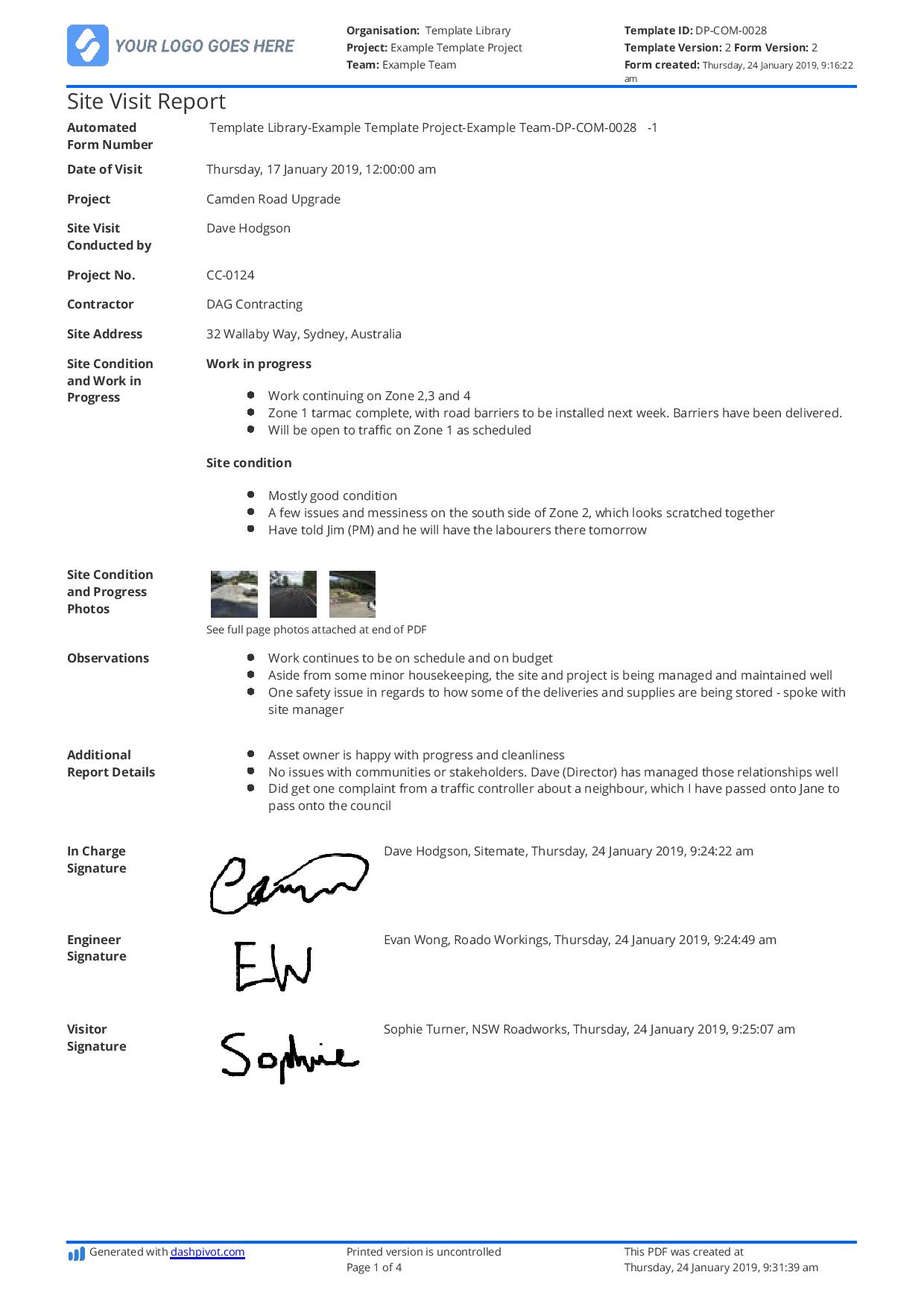
Use a free Site Visit Report template based on this Site Visit Report example
Digitise this site visit report example.
Make it easy for your team to fill out site visit reports by using a standardised site visit report template .
The free digital site visit report comes pre-built with all the fields, section and information from the site visit report example above for your team to carry out detailed reports.
Customise the report with any extra information you need captured from your site visit reports with the drag and drop form builder.
Distribute your digital site visit report for your team on mobile or tablet so they can fill it out on site while the information is still fresh and at hand.
Create digital workflows for your site visit reports
Make it easy for your team to request, record and sign off on site visit reports by utilising a dedicated a site visit report app .
Automated workflows move a site visit request from planning to recording to signoff a smooth and simple process.
Quickly and easily share completed site visit reports as perfectly formatted PDF or CSV so your team is always across what's been recorded.
Take photos of site progress on site via your mobile or tablet, attach directly to your site visit reports with automatic timestamps, geotagging, photo markup and more.
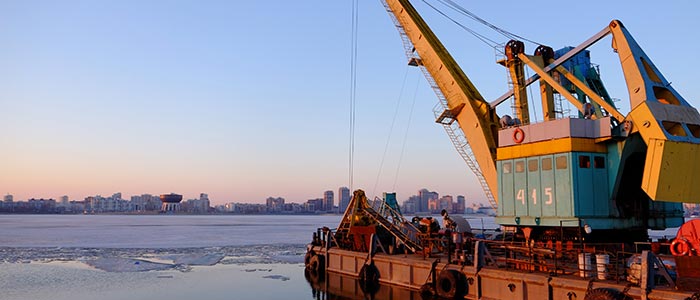
Site diary template
Complete and organise your daily diaries more efficiently.

Meeting Minutes template
Capture, record and organise those meeting minutes.

Progress Claim template
Streamline and automate the progress claim process to get paid faster and look more professional.
Sitemate builds best in class tools for built world companies.
About Nick Chernih
Nick is the Senior Marketing Manager at Sitemate. He wants more people in the Built World to see the potential of doing things a different way - just because things are done one way doesn't mean it's the best way for you.
Leave a Comment Cancel Reply
Save my name, email, and website in this browser for the next time I comment.
- PRO Courses Guides New Tech Help Pro Expert Videos About wikiHow Pro Upgrade Sign In
- EDIT Edit this Article
- EXPLORE Tech Help Pro About Us Random Article Quizzes Request a New Article Community Dashboard This Or That Game Popular Categories Arts and Entertainment Artwork Books Movies Computers and Electronics Computers Phone Skills Technology Hacks Health Men's Health Mental Health Women's Health Relationships Dating Love Relationship Issues Hobbies and Crafts Crafts Drawing Games Education & Communication Communication Skills Personal Development Studying Personal Care and Style Fashion Hair Care Personal Hygiene Youth Personal Care School Stuff Dating All Categories Arts and Entertainment Finance and Business Home and Garden Relationship Quizzes Cars & Other Vehicles Food and Entertaining Personal Care and Style Sports and Fitness Computers and Electronics Health Pets and Animals Travel Education & Communication Hobbies and Crafts Philosophy and Religion Work World Family Life Holidays and Traditions Relationships Youth
- Browse Articles
- Learn Something New
- Quizzes Hot
- This Or That Game
- Train Your Brain
- Explore More
- Support wikiHow
- About wikiHow
- Log in / Sign up
- Education and Communications
- Official Writing
- Report Writing
How to Write a Visit Report
Last Updated: March 30, 2024 References
This article was co-authored by Madison Boehm . Madison Boehm is a Business Advisor and the Co-Founder of Jaxson Maximus, a men’s salon and custom clothiers based in southern Florida. She specializes in business development, operations, and finance. Additionally, she has experience in the salon, clothing, and retail sectors. Madison holds a BBA in Entrepreneurship and Marketing from The University of Houston. This article has been viewed 663,946 times.
Whether you’re a student or a professional, a visit report helps you document the procedures and processes at an industrial or corporate location. These reports are fairly straightforward. Describe the site first and explain what you did while you were there. If required, reflect on what you learned during your visit. No additional research or information is needed.
Writing a Visit Report
Explain the site's purpose, operations, and what happened during the visit. Identify the site's strengths and weaknesses, along with your recommendations for improvement. Include relevant photos or diagrams to supplement your report.
Describing the Site

- Reports are usually only 2-3 pages long, but in some cases, these reports may be much longer.
- In some cases, you may be asked to give recommendations or opinions about the site. In other cases, you will be asked only to describe the site.
- Ask your boss or instructor for models of other visit reports. If you can't get a model, look up samples online.

- If you visited a factory, explain what it is producing and what equipment it uses.
- If you visited a construction site, describe what is being constructed and how far along the construction is. You should also describe the terrain of the site and the layout.
- If you’re visiting a business, describe what the business does. State which department or part of the business you visited.
- If you’re visiting a school, identify which grades they teach. Note how many students attend the school. Name the teachers whose classes you observed.

- Who did you talk to? What did they tell you?
- What did you see at the site?
- What events took place? Did you attend a seminar, Q&A session, or interview?
- Did you see any demonstrations of equipment or techniques?

- For example, at a car factory, describe whether the cars are made by robots or humans. Describe each step of the assembly line.
- If you're visiting a business, talk about different departments within the business. Describe their corporate structure and identify what programs they use to conduct their business.
Reflecting on Your Visit

- Is there something you didn’t realize before that you learned while at the site?
- Who at the site provided helpful information?
- What was your favorite part of the visit and why?

- For example, you might state that the factory uses the latest technology but point out that employees need more training to work with the new equipment.
- If there was anything important left out of the visit, state what it was. For example, maybe you were hoping to see the main factory floor or to talk to the manager.

- Tailor your recommendations to the organization or institution that owns the site. What is practical and reasonable for them to do to improve their site?
- Be specific. Don’t just say they need to improve infrastructure. State what type of equipment they need or give advice on how to improve employee morale.
Formatting Your Report

- If you are following a certain style guideline, like APA or Chicago style, make sure to format the title page according to the rules of the handbook.

- Don’t just say “the visit was interesting” or “I was bored.” Be specific when describing what you learned or saw.

Sample Visit Report

Community Q&A
You Might Also Like

- ↑ http://services.unimelb.edu.au/__data/assets/pdf_file/0010/471286/Site_Reports_for_Engineers_Update_051112.pdf
- ↑ https://www.examples.com/business/visit-report.html
- ↑ https://www.thepensters.com/blog/industrial-visit-report-writing/
- ↑ https://eclass.aueb.gr/modules/document/file.php/ME342/Report%20Drafting.pdf
About This Article

To write a visit report, start by including a general introduction that tells your audience where and when you visited, who your contact was, and how you got there. Once you have the introduction written out, take 1 to 2 paragraphs to describe the purpose of the site you visited, including details like the size and layout. If you visited a business, talk about what the business does and describe any specific departments you went to. Then, summarize what happened during your visit in chronological order. Make sure to include people you met and what they told you. Toward the end of your report, reflect on your visit by identifying any strengths and weaknesses in how the site operates and provide any recommendations for improvement. For more help, including how to format your report, read on! Did this summary help you? Yes No
- Send fan mail to authors
Reader Success Stories
Betty Tarutia
Jul 9, 2020
Did this article help you?
Jayani Rathnayake
Aug 6, 2019
Jun 13, 2019
Atremedaki Phawa
Aug 19, 2019

Featured Articles

Trending Articles

Watch Articles

- Terms of Use
- Privacy Policy
- Do Not Sell or Share My Info
- Not Selling Info
wikiHow Tech Help Pro:
Level up your tech skills and stay ahead of the curve
Unleash Greatness
How To Craft An Effective Facility Walking Tour
By Rob Hawse
A tour is a powerful branding opportunity but it’s one that companies frequently miss — or mess up.
Here are five steps you can take to craft a more effective facility walking tour.
Step 1: Identify your goal and create a strategy.
While it’s nice to feel proud of your facility and impress your visitors, for a walking tour to have real impact on your brand, there needs to be a strategy behind it.
Before you can create a strategy, however, you need a goal for your walking tour.
- What do you want people to walk away with?
- What do you want their perceptions to be?
Once you know this, you can then build a walking tour that will help accomplish it.
Here’s what not to do: Focus on what your competitor is doing.
Instead, gather your key stakeholders and work together to identify what it is that makes your company different.
In fact, this is the most important work you’ll do in crafting the tour.
It could be the way you make your product – maybe you’re a challenger brand that builds a common product but in a very unique way – or it could be you’re a category leader based on the way you treat customers.
You want to bring that uniqueness front and center and celebrate it throughout the tour.
Step 2: Identify the top stations that define your process.
Using furniture manufacturing as an example, your tour stops might include:
- Raw materials selection
- Gluing and assembly
- Upholstering
But, just because you have all those stops, it doesn’t mean you highlight them all equally.
Maybe it’s the manner in which you select each individual piece of wood or the application of a 100-year-old family finishing recipe that makes you stand out amongst your competitors.
Or if distribution is more important to your customer, the manufacturing process could be shown at the macro level via catwalk, while the bulk of the tour focused on a more granular look at distribution and the customer service experience.
Don’t forget the lobby!
Even though it is not where your craft takes place, the lobby is the visitor’s initial introduction to your facility and so is effectively the first “station” in the tour. The lobby should contain displays and other materials that set the tone for the tour and build excitement and anticipation for what’s to come.
Step 3: Make each station a destination.
Each station stop on the tour should be clearly marked with signage or a display. The idea is to make the station a destination .
You can have some fun here.
Maybe the displays are made from the same materials your product is made from and incorporate that stage of the process somehow. Signage might reflect the key topics that are covered.
If much of what you are showing on your tour is assembly, maybe your tour stops get more complete as you advance along the tour.
Limit the number of stations to only the important ones – it’s not about how many stations you have, it’s about ensuring a quality visitor experience at each stop.
Step 4. Choreograph the walking tour experience from beginning to end.
A well-crafted tour experience communicates many aspects of your brand simultaneously and in three dimensions . In many ways it’s a performance, and good performances are planned, scripted, choreographed and rehearsed.
Create and distribute a written tour script and ask all employees to get familiar with it. Appoint employees willing to master the script, as tour guides. At each station, there should be a few employees within earshot of the presentation and the tour guide should incorporate them in a conversational but in a planned way. This technique keeps the visitor engaged and gives them a glimpse into the company’s inner workings.
Involving everyone in the tour process will have the added benefit of greater alignment within your company. In fact, a great aspiration would be for everyone in the company to be able to give the tour.
Step 5. Build visitor dialog into the experience.
The tour is a golden opportunity to engage visitors in dialog and make them feel connected to your brand. You can foster this dialog by providing visitors with a dialog starter in the form of a card with a list of best questions to ask at each stop. (Hint: Your sales team can be an invaluable resource here.)
The “best questions” book/pamphlet/sheet could be handed out in the lobby before starting the tour. It’s a great way to show you’ve organized and planned this tour and demonstrates to visitors that their time is important to you.
Ensure your facility walking tour is “Real.”
The most important aspect of the facility tour, however, is to craft it in a way that shows your company as it really is, including its quirks and characters .
The more “real” you can keep it, the easier it will be for visitors to really connect with your brand, and become attached to the idea your product or service is definitely for them.
You Might Also Like
Ways to maximize the return on a trade show investment, share this blog post.
Want to stay in the know?
The marketing world isn’t going to slow down anytime soon. We’ll help you stay up-to-speed with updates and insights about marketing for manufacturers.
Let's Brainstorm Together
What Are You Looking For?

Facility Tour
What is a Facility Tour?
What are the benefits of giving facility tours.
- Give customers an inside look. Whether the facility is a nursing home or a manufacturing plant, a facility tour gives customers insight on how the facility runs.
- Gives new employees the lay of the land. Being a new employee can be intimidating! A facility tour helps the employee be confident in the lay of the land.
- Gives potential clients a sneak peek. When companies are trying to attract vendors or clients, a facility tour can give the vendor the confidence they need to invest in a quality company.
Who Should Be Invited to Facility Tours
New employees, vendors/clients, how to conduct a facility tour, step 1: introduction and information, step 2: the tour, step 3: the follow-up.
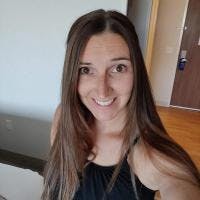
Samantha Palm, MHRM, SHRM-SCP

Eddy’s HR Mavericks Encyclopedia

- Eddy Overview
- People Management
- Time Tracking
- Training Tracking
- HR Encyclopedia
- HR Mavericks Podcast
- Help Center
- Contact Support
- SUGGESTED TOPICS
- The Magazine
- Newsletters
- Managing Yourself
- Managing Teams
- Work-life Balance
- The Big Idea
- Data & Visuals
- Reading Lists
- Case Selections
- HBR Learning
- Topic Feeds
- Account Settings
- Email Preferences
Why (and How) to Take a Plant Tour
- David M. Upton
- Stephen E. Macadam
By adopting a systematic approach to plant tours, visitors can uncover and communicate a wealth of strategic and operating information.
In recent years, managers have recognized how manufacturing capabilities contribute to a company’s overall strategic strength. The ability to respond quickly to customers’ orders, to customize products to match customers’ exact requirements, or to ramp up production rapidly can be a powerful and difficult-to-imitate competitive weapon. But many corporate managers identify their plants’ capabilities only by accident—as a result of chance conversations with plant managers or operations specialists. Consequently, many managers do not have the information necessary to cultivate, shape, and exploit their company’s manufacturing capabilities. As plants develop, however, they need guidance to build capabilities that meet current and future needs. Plant tours can be a powerful way of providing factories with that kind of direction.
- David M. Upton is the American Standard Companies Professor of Operations Management at the University of Oxford’s Saïd Business School.
- SM Stephen E. Macadam is a principal at McKinsey & Company’s Charlotte, North Carolina, office.
Partner Center
- symplr Directory
- symplr Payer
- symplr Provider
- symplr Clinical Communications
- symplr Physician Scheduling
- symplr Workforce
- Contingent Talent Management
- symplr Assessments
- symplr Hiring
- symplr Learning
- symplr Performance
- symplr Recruiting
- symplr Talent Sourcing
- symplr Access
- Capital Market Intelligence
- Provider Evidence
- Spend Analytics
- symplr Spend
- Midas Health Analytics
- Quality Review
- symplr Compliance
- symplr Safety
- symplr Contract
- Human Resources
- Information Technology
- Medical Staff Professional
- Quality & Safety
- Supply Chain
- All resources
- Calculators
- Case studies
- White papers
- The DAISY Foundation
- Golf Ambassadors
- Customer Support
Creating a Visitor Policy that Reflects Your Facility’s Access Needs
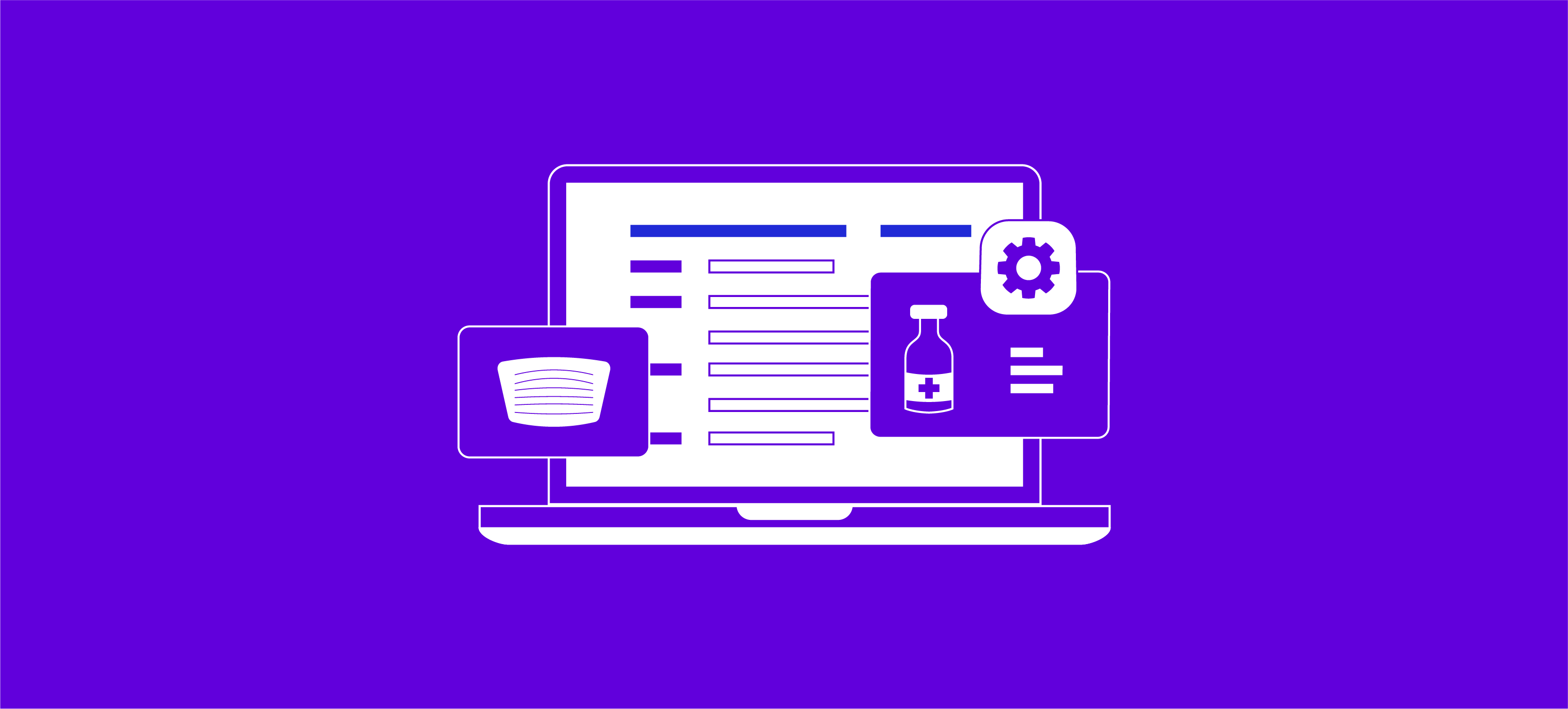
Is your health system allowing visitors again after a recent COVID-19 pandemic lockdown?
It’s the perfect time to re-evaluate your visitor policies. As doors are reopened to patients’ families across the nation, administrators face a difficult task: striking the best balance between patient support and patient safety . Now, more than ever, it’s paramount to review the policies that govern visitation at your healthcare facilities to ensure they follow the latest public health guidance and adhere to leading industry practices.
The Value of Visitors
We know that visits from family improve patient outcomes. According to Karlene Kerfoot, PhD, RN, FAAN, Chief Nursing Officer at symplr, “ Highly restrictive visitor policies that prohibit or limit visitors such as often seen in ICUs can be very detrimental to the development of the family as the care partner and the well-being of the patient.”
Treating family and other individuals designated by patients as “partners in care” has a tangible impact on continuity of care, readmission rates, patients’ emotional wellbeing, safety, and the management of both chronic and acute illnesses. This stance is supported by an abundance of empirical evidence, as well as multiple studies and health publications. As a result, The Joint Commission now recommends patients bring a trusted individual along with them to the hospital to support their care and safety.
How can we balance the essential support patients need with contingencies, such as COVID-19?
Covid-19 related contingencies to consider while revamping visitor policies.
COVID-19 has made it necessary for all healthcare facilities to re-evaluate infection control policies, including those regarding visitors. Combined with the serious consequences of infection and significant risk of mortality, ease of transmission makes COVID-19 positive visitors a distinct threat to patients and staff. For the same reasons, patients’ COVID-19 status is of equal concern to their families.
Unfortunately, ensuring that every person roaming the halls of hospitals, ambulatory and other health facilities is COVID-19 negative is all but impossible. People can be contagious for multiple days before they carry enough viral load to register as positive on a COVID-19 test. Checking nonpatients’ temperatures before they enter the building is an option many institutions are implementing to reduce the spread of illness. Yet, it’s important to note that not all people who contract COVID-19 will experience a fever. COVID-19 can also be spread before any symptoms appear.
While hospital and healthcare facility staff are trained ongoingly to follow proper infection control procedure, this is not the case for most visitors and patients. “The best practice solution we have now is masking, temperature checks, querying about symptoms, history of any positive contacts and frequent handwashing. We have seen healthcare organizations and other businesses require the use of masks which have been proven to be an effective deterrent,” Kerfoot said. Enforcing masking policies in accordance with public health guidance and encouraging frequent handwashing and hand sanitizing can help reduce the risk of contracting COVID-19 for patients, visitors, and staff. In the event that someone arrives to visit a patient without a mask, one should be provided along with infection control reminders. Hand sanitizer should also be made readily available throughout the facility.
Other Considerations
The COVID-19 pandemic remains at the forefront of our minds, but it’s not the only safety concern worth considering while reviewing your visitor policy.
Patients’ Needs and Preferences
Individual patients will have different requirements and preferences based on their clinical situation and emotional needs. For example, patients in an acute care rehab center may not have any scheduled rehabilitation after 6 PM but will require quiet hours in the evening to rest.
And although many facilities are currently limiting visitors to one at a time, laboring mothers may choose to have both their partner and a doula present for their child’s birth, if possible. Organizations need a flexible plan to address the possibility of minors visiting parents, grandparents, and older siblings as the incidence of COVID-19 changes in specific localities.
In any setting, in-person visitation is ill-advised for patients who are at high risk from any form of highly infectious disease.
Alternatives to In-Person Visitation at Hospitals, Nursing Homes, and Other Health Facilities
When in-person visitation temporarily becomes unsafe or unsustainable, every effort should be made to help patients keep in touch with their support system. How can patients still receive the social support they need when having in-person visitors is not safe?
- Video chat, such as Facetime or Google Duo
- Cell phone calls
- Virtual conference calls, using technology such as Zoom, WebEx, or a number of other options
- Visiting from the other side of a ground-floor window
Patient and Visitor Safety
Crime and violence in the surrounding community also warrant additional measures from healthcare staff. In some areas, perhaps security guards are accountable for visitor check-in. Through security’s visitor screening, bad actors can be identified and prohibited from entering. If there is an imminent threat, such as an active shooter or bomb threat, it’s critical to know where visitors are and include them in your plan for protecting everyone in the facility.
An often-overlooked concern is the possibility that visitors may become abusive or violent toward patients, staff, and other visitors. Ensure your staff are well-trained on what to do should such a situation arise, and ensure your system allows you to document individuals who should be prohibited from visiting in the present and the future.
There is no one-size-fits-all approach to fit every healthcare setting. However, communication and consideration between administration, staff, patients, and caregivers can go a long way when it comes to developing the best visitor policy for your organization.
Start defining your visitor policy using our free template.

Request a Demo
5 ways to avoid visitor management issues, cms guidance on visitors in long-term care facilities, how to evaluate visitor management systems.
- Visit Report
Visit Report Format
Visit report samples, what is visit report, the basic format of a visit report, how to write a proper visit report, what are some examples of a visit report, how many pages does a visit report have, what is a trip report memo, how do you write a visit report, what is included in a site visit report, how to prepare a site visit report, how to prepare for a customer visit, what should a report include, what is a customer visit report, how do i end a report, what is the summary of the activity report, what does a report look like, what is the objective of a site visit report.

1. Title Page
- Organization Name
- Visitor’s Name
- Date of Visit
2. Introduction
- Purpose of Visit
- Location of Visit
3. Details of the Visit
- Activities Undertaken
- Observations
4. Findings
- Summary of Observations
- Key Points Noted
5. Conclusion
- Summary of Visit
- Recommendations
6. Appendices (if any)
- Additional Documents
- Photographs
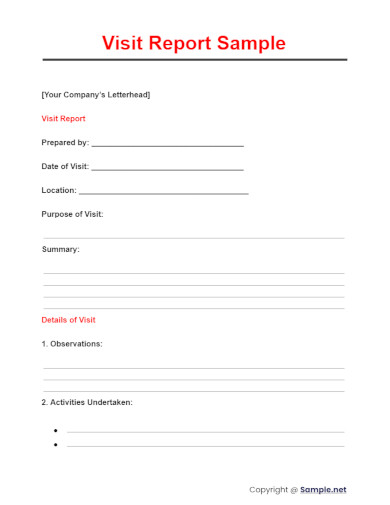
Visit Report Sample
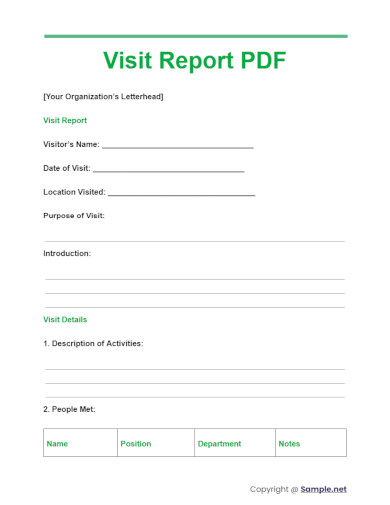
Visit Report PDF
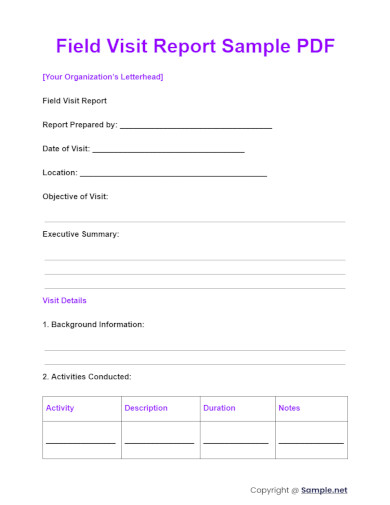
Field Visit Report Sample PDF
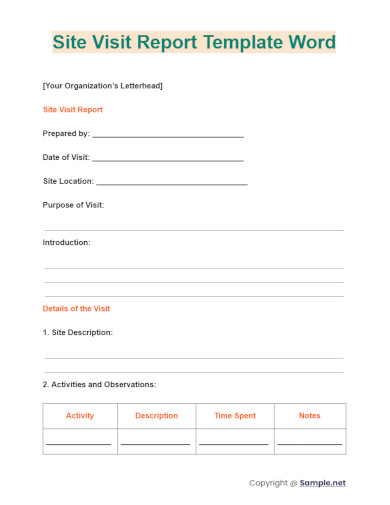
Site Visit Report Template Word

Visit Report Template
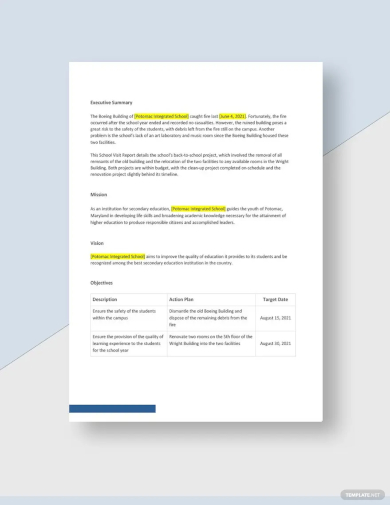
Sample School Visit Report
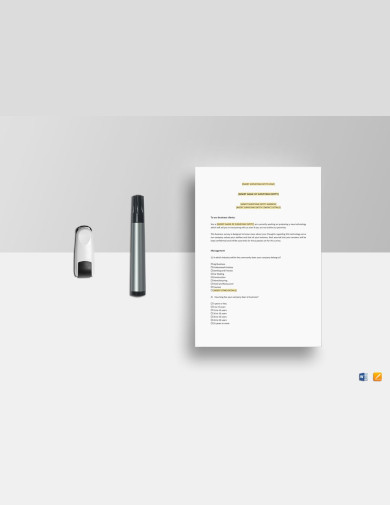
Customer Visit Report Template
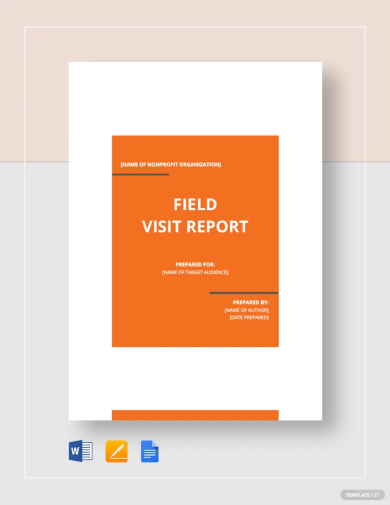
Field Visit Report
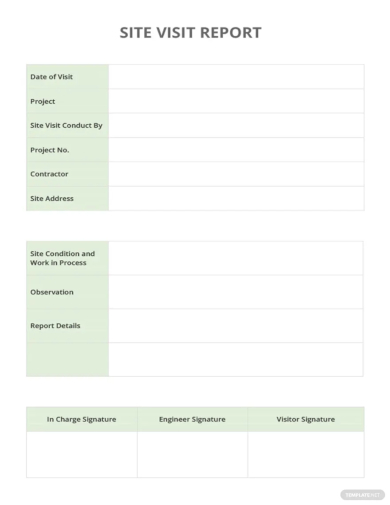
Sample Site Visit Report

Customer Visit Report Outline
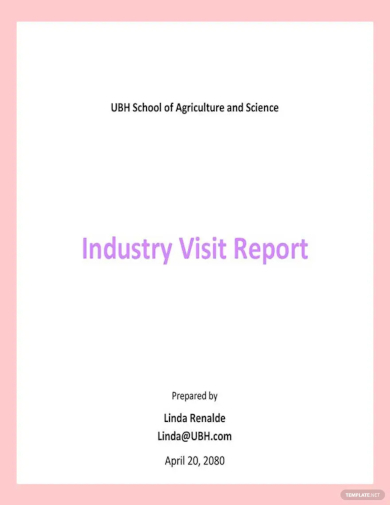
Sample Industry Visit Report
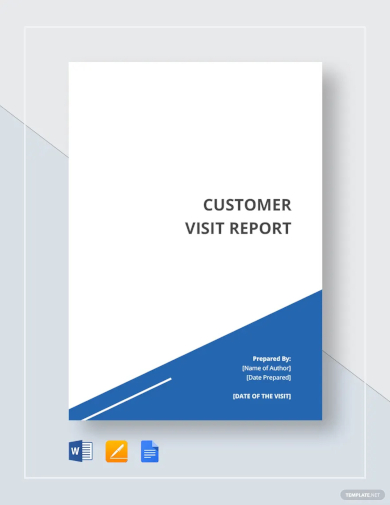
New Customer Visit Report Template
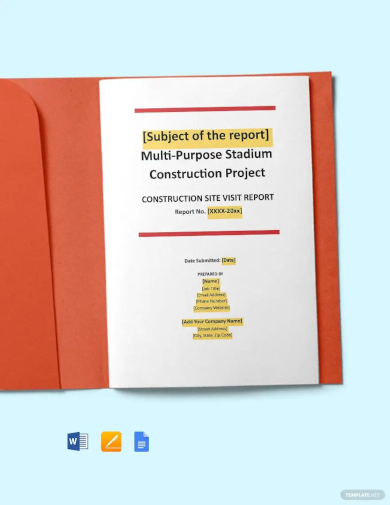

Construction Site Visit Report
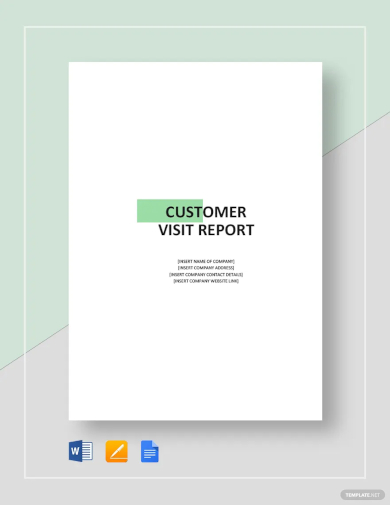
Sample Customer Visit Report

Free School Visit Report Template
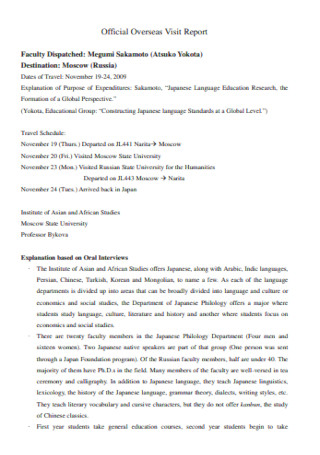
Sample Official Overseas Visit Report
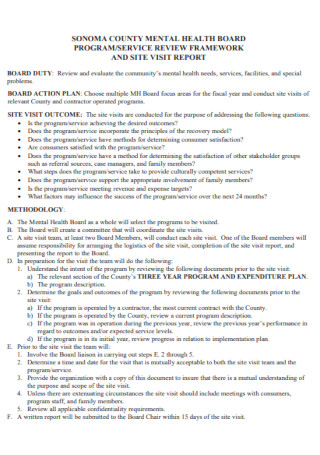
Weekly Site Visit Report
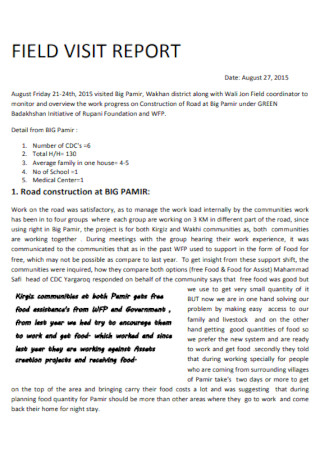
Project Field Visit Report
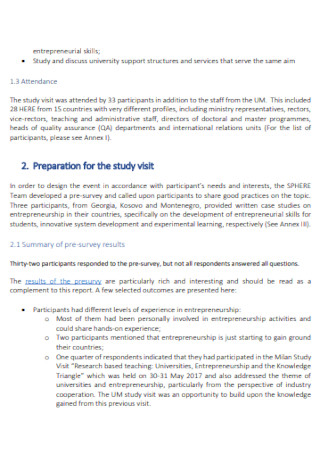
Recommendation Study Visit Report

Observation Site Visit Reports for Engineers

Simple Industrial Visit Report
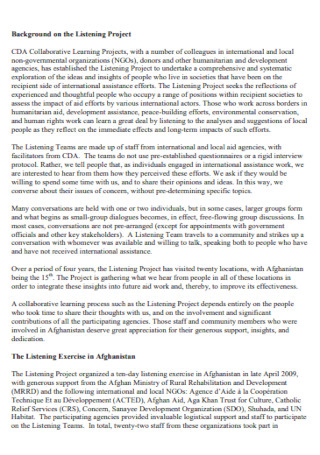
School Lab Visit Analysis Report
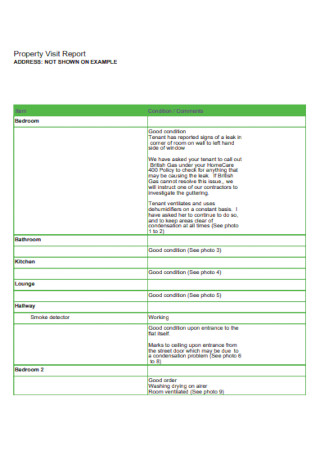
Building Construction Property Visit Report
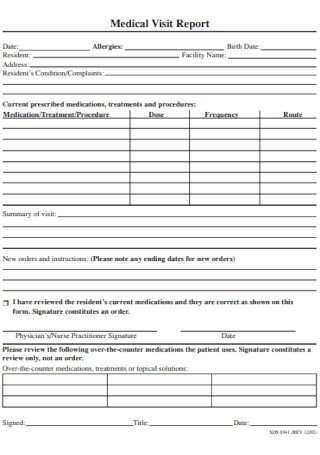
Medical College Visit Report
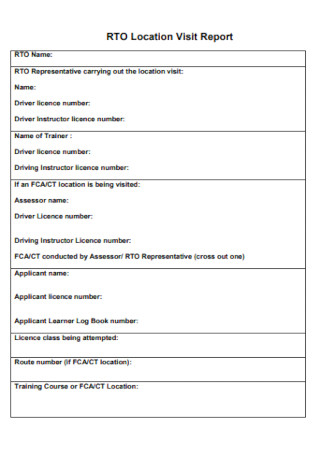
Sample Location Visit Report
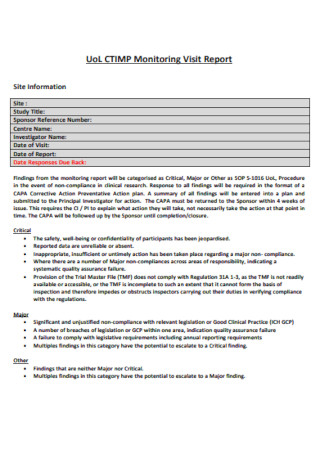
Monitoring Visit Report Summary
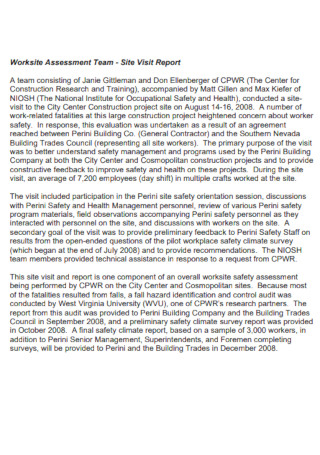
Marketing Team Site Visit Report

School Academic Visit Report Template
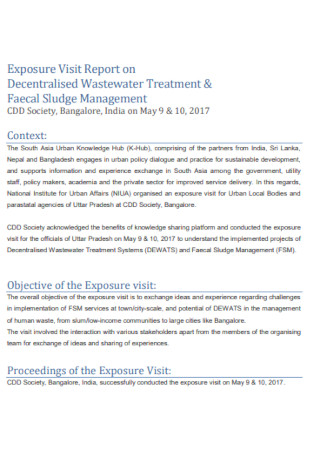
Chemical Exposure Visit Report
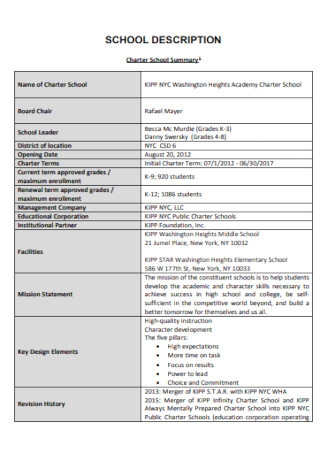
Business Renewal Site Visit Report
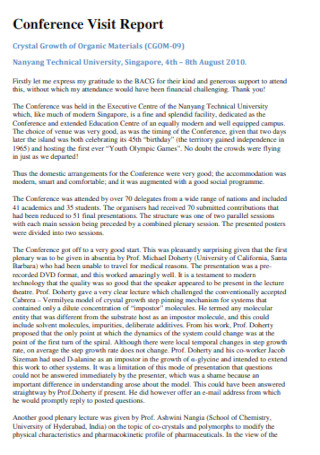
Management Conference Visit Report
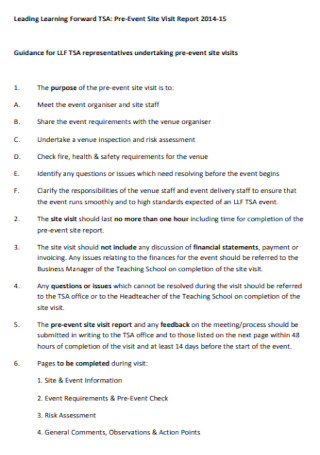
Pre-Event Site Visit Report Example in PDF
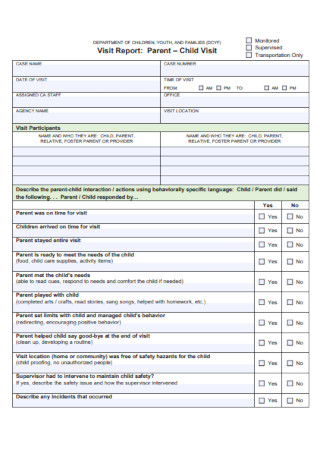
Sample Parent Visit Report Format
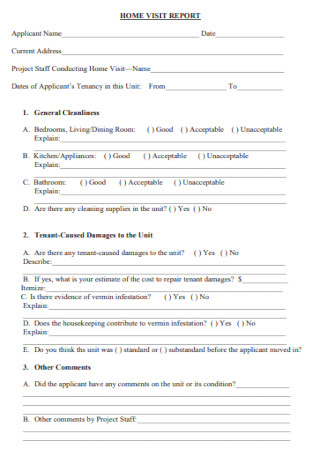
Home Tour Visit Report Template
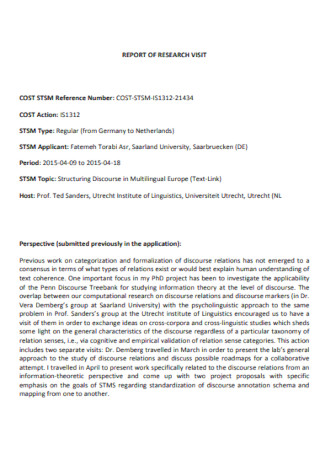
Report of Research Visit
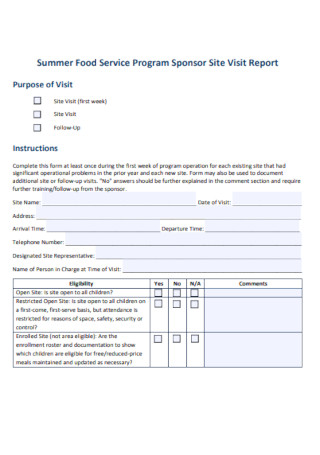
Daily Food Sponsor Visit Report Example
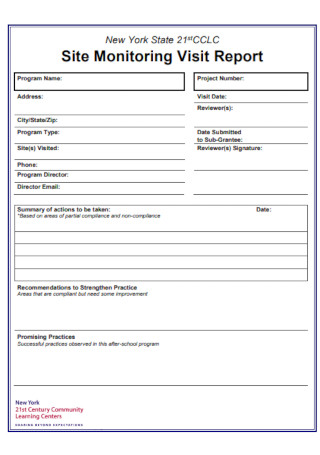
Sample Civil Site Monitoring Visit Report
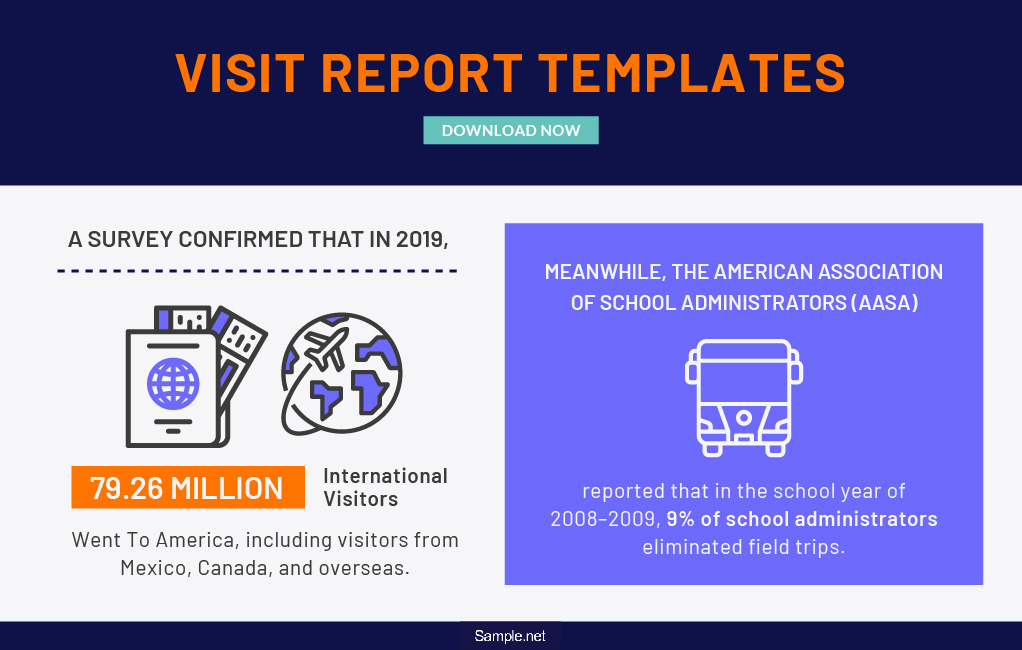
Why Are Visit Reports Important?
Step 1: determine your purpose, step 2: be observant and write what happened, step 3: reflect on your visit, step 4: download a template and insert the details, step 5: organize details according to the format.
- Site visit report
- Business visit report
- Field trip visit report
- Industrial visit report
- Monitoring visit report

- Define the Purpose: Clearly state the visit’s objectives and expected outcomes. For example, the purpose of a Training Report may include identifying partnership opportunities.
- Collect Information: Take detailed notes during the visit, and use photos or videos to supplement your observations.
- Organize Data: Categorize the information into sections such as background, observations, and analysis.
- Draft the Report: Begin with an introduction, followed by detailed observations, analysis, and end with a summary and recommendations.
- Review and Finalize: Proofread for accuracy and clarity, ensuring the report follows the planned structure and incorporates stakeholder feedback. You may also see Lab Report
- Introduction: State the purpose, date, duration, and participants involved. For instance, a Construction Site Visit Report should specify the project stage being assessed.
- Site Description: Provide a detailed description of the site, current conditions, and relevant background information.
- Observations: Offer a detailed account of activities, notable events, and any issues encountered.
- Analysis: Interpret the observations, relating them to the visit objectives and providing insights.
- Conclusion and Recommendations: Summarize key findings and provide recommendations for future actions or improvements. You may also see Technical Report
- Pre-Visit Preparation: Understand the visit’s purpose and objectives, gathering necessary information beforehand.
- Data Collection: Take comprehensive notes during the visit and use multimedia tools to document observations.
- Data Organization: Organize the collected data into coherent sections, highlighting significant observations.
- Report Drafting: Write an introduction, detailed body sections covering observations and analyses, and a conclusion with recommendations.
- Review and Finalization: Proofread for accuracy and clarity, ensuring the report meets its objectives and incorporates stakeholder feedback. You may also see Police Report
- Research: Understand the customer’s needs, preferences, and background information.
- Planning: Schedule the visit, prepare an agenda, and coordinate with relevant team members. You may also see Social Media Report
- Materials Preparation: Gather all necessary documents, presentations, and product samples.
- Team Briefing: Brief your team on the visit’s objectives, roles, and responsibilities.
- Follow-Up: Plan post-visit actions, such as sending a summary email and addressing any customer queries. This approach can be applied to a Home Visitation Report to ensure thorough preparation and follow-up.
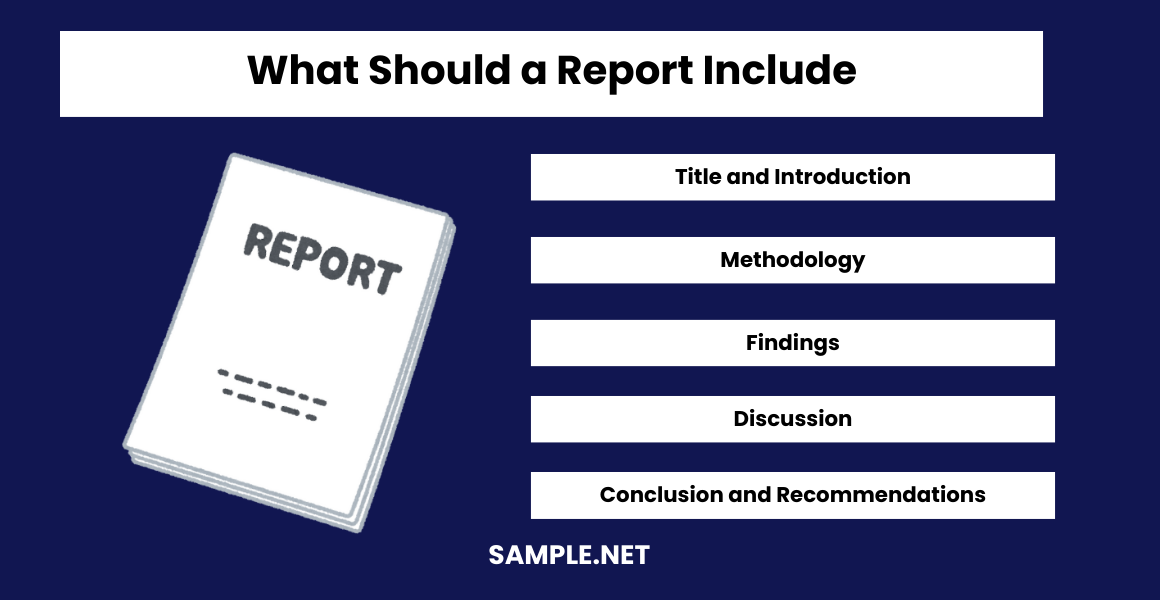
- Title and Introduction: Clearly state the report’s title and provide an overview of its purpose and scope. For example, an Internship Report should highlight the intern’s role and learning objectives.
- Methodology: Describe the methods used to collect and analyze data.
- Findings: Present detailed findings, supported by data and observations. You may also see Weather Report
- Discussion: Analyze the findings, discussing their implications and significance.
- Conclusion and Recommendations: Summarize key insights and provide actionable recommendations for future actions. This format is equally effective for a School Visit Report to convey the visit’s outcomes comprehensively.
What does the site visit report example cover?
Share this post on your network, you may also like these articles, medical report.
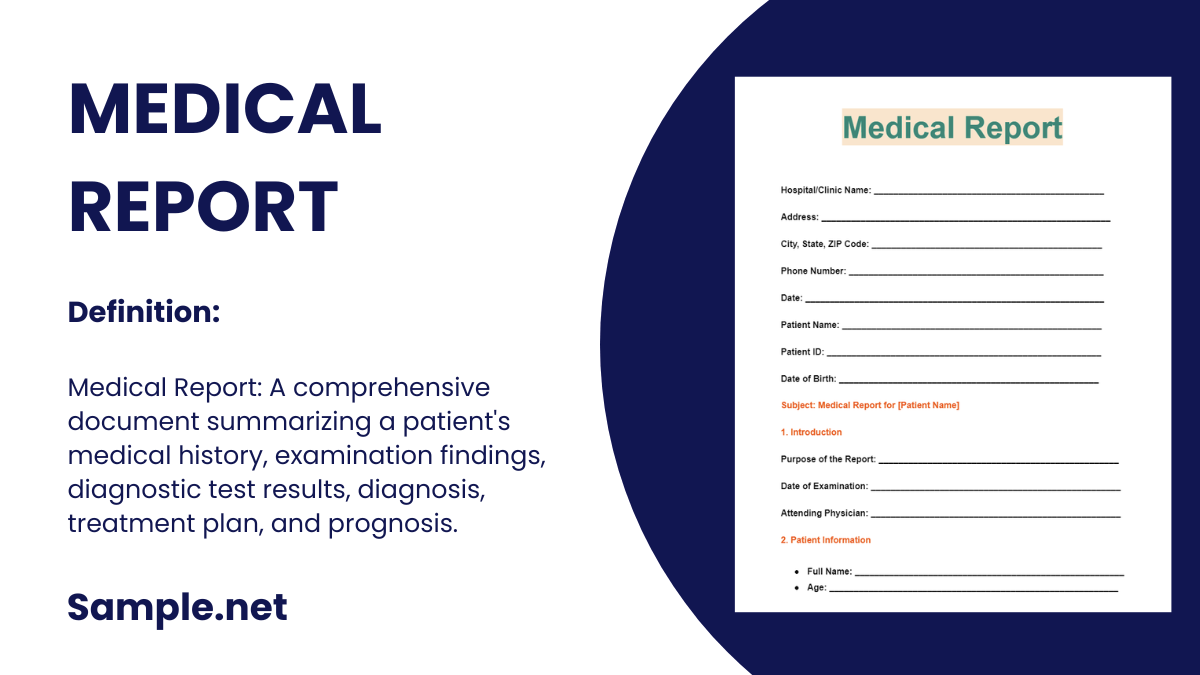
In this comprehensive guide, we will explore the essentials of creating an effective Medical Report. Whether you are a healthcare professional or need to understand how to document medical…
School Project Proposal
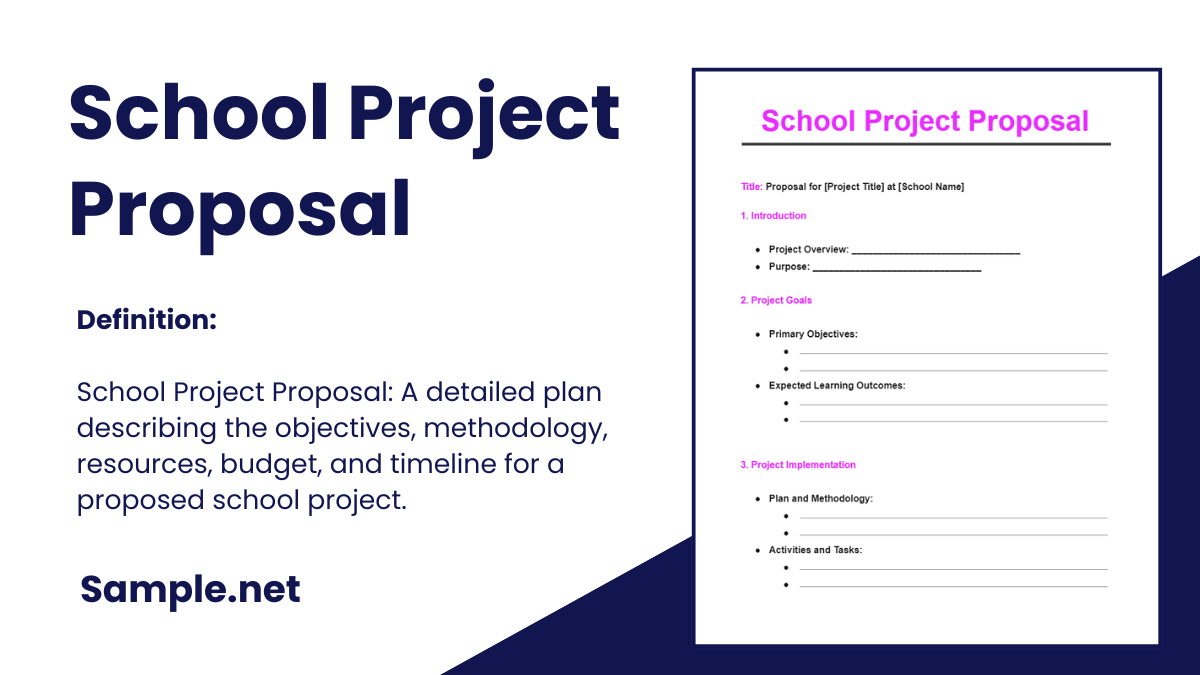
In this comprehensive guide, we will explore the essentials of crafting an effective School Project Proposal. Whether you are a student, teacher, or administrator, this guide provides clear instructions,…
browse by categories
- Questionnaire
- Description
- Reconciliation
- Certificate
- Spreadsheet
Information
- privacy policy
- Terms & Conditions

Follow these four steps to code quickly and accurately, while reducing the need to count up data points.
KEITH W. MILLETTE, MD, FAAFP, RPh
Fam Pract Manag. 2021;28(4):21-26
Author disclosure: no relevant financial affiliations.

The new rules for coding evaluation and management (E/M) office visits are a big improvement but still a lot to digest. 1 , 2 To ease the transition, previous FPM articles have laid out the new American Medical Association/CPT medical decision making guide 3 and introduced doctor–friendly coding templates (see “ Countdown to the E/M Coding Changes ,” FPM , September/October 2020), explained how to quickly identify level 4 office visits (see “ Coding Level 4 Visits Using the New E/M Guidelines ,” FPM , January/February 2021), and applied the new guidelines to common visit types (see “ The 2021 Office Visit Coding Changes: Putting the Pieces Together ,” FPM , November/December 2020).
After several months of using the new coding rules, it has become clear that the most difficult chore of coding office visits now is assessing data to determine the level of medical decision making (MDM). Analyzing each note for data points can be time-consuming and sometimes confusing.
That being the case, it's important to understand when you can avoid using data for coding, and when you can't. I've developed a four-step process for this (see “ A step-by-step timesaver ”).
The goal of this article is to clarify the new coding rules and terminology and to explain this step-by-step approach to help clinicians code office visits more quickly, confidently, and correctly.
The new evaluation and management office visit coding rules have simplified many things but are still a lot to digest, especially when it comes to counting data.
There are different levels of data and different categories within each level, which can make using data to calculate the visit level time-consuming and confusing.
By calculating total time, and then moving on to assessing problems and prescription drug management, most visits can be optimally coded without dealing with data at all.
OFFICE VISIT CODING RULES AND TERMINOLOGY
To make full use of the step-by-step process, we have to first understand the new rules, as well as coding terminology. Here is a brief summary.
Medically appropriate . Physicians and other qualified health care professionals may now solely use either total time or MDM to determine the level of service of an office visit. That means the “history” and “physical exam” components are no longer needed for code selection, which simplifies things. But your patient note must still contain a “medically appropriate” history and physical. So continue to document what is needed for good medical care.
New patient . A new patient is a patient who has not been seen by you or one of your partners in the same medical specialty and the same group practice within the past three years.
Total time and prolonged services . Total time includes all the time you spend on a visit on the day of the encounter (before midnight). It includes your time before the visit reviewing the chart, your face-to-face time with the patient, and the time you spend after the visit finishing documentation, ordering or reviewing studies, refilling medications, making phone calls related to the visit, etc. It does not include your time spent performing separately billed services such as wellness visits or procedures. Total time visit level thresholds differ for new patients vs. established patients. (See the total times in “ The Rosetta Stone four-step template for coding office visits .”)
The prolonged services code comes into play when total time exceeds the limits set for level 5 visits by at least 15 minutes.
Medical decision making . MDM is made up of three components: problems, data, and risk. Each component has different levels, which correspond to levels of service (low/limited = level 3, moderate = level 4, and high/extensive = level 5). The highest level reached by at least two out of the three components determines the correct code for the level of service. MDM criteria is the same for new and established patients.
Problems addressed . This includes only the problems you address at that specific patient visit. It does not include all the patient's diagnoses and does not include problems that are exclusively managed by another clinician. Problems addressed are separated into low-complexity problems (level 3), moderate-complexity problems (level 4), and high-complexity problems (level 5). To code correctly, you need to know the coding value of the problems you address. It is helpful to think of problems in terms of levels of service (e.g., a sinus infection is usually a level 3 problem, and pneumonia or uncontrolled diabetes are usually level 4 problems).
The simplest way to summarize problems is this: Life-threatening problems are level 5; acute or chronic illnesses or injuries are level 3 or 4 depending on how many there are, how stable they are, and how complex they are; and if there's just one minor problem, it's level 2.
(For more specifics see “ What level of problem did I address? ”)
Risk . Risk is also separated into “low” (level 3), “moderate” (level 4), and “high” (level 5) categories.
Level 3 risk includes the use of over-the-counter (OTC) medications.
Level 4 risk includes the following:
Prescription drug management: starting, stopping, modifying, refilling, or deciding to continue a prescription medication (and documenting your thought process),
Social determinants of health that limit diagnosis or treatment (this is when patients' lack of finances, insurance, food, housing, etc., affects your ability to diagnose, manage, and care for them as you normally would).
Level 5 risk includes the following:
Decisions about hospitalization,
Decisions about emergency major surgery,
Drug therapy that requires intensive toxicity monitoring,
Decisions to not resuscitate or to de-escalate care because of poor prognosis.
Data analyzed . For purposes of MDM, data is characterized as “limited” (level 3 data), “moderate” (level 4 data), or “extensive” (level 5 data). But each level of data is further split into Categories 1, 2, and 3. This can make calculating data complicated, confusing, and time-consuming. Here are the data components and terms you need to know.
Category 1 data includes the following:
The ordering or reviewing of each unique test , i.e., a single lab test, panel, X-ray, electrocardiogram (ECG), or other study.
Ordering and reviewing the same lab test or study is worth one point, not two; a lab panel (e.g., complete blood count or comprehensive metabolic panel) is worth one point,
Reviewing a pertinent test or study done in the past at your own facility or another facility,
Reviewing prior external notes from each unique source, including records from a clinician in a different specialty or from a different group practice or facility as well as each separate health organization (e.g., reviewing three notes from the Mayo Clinic is worth one point, not three, but reviewing one note from Mayo and one from Johns Hopkins is worth a total of two points),
Using an independent historian, which means obtaining a history from someone other than the patient, such as a parent, spouse, or group home staff member. (This is included in Category 2 for level 3 data, but falls into Category 1 for level 4 and 5 data.)
Category 2 data includes the following:
Using an independent historian (for level 3 data only),
Independent interpretation of tests, which is your evaluation or reading of an X-ray, ECG, or other study (e.g., “I personally reviewed the X-ray and it shows …”) and can include your personal evaluation of a pertinent study done in the past at your or another facility. It does not include reviewing another clinician's written report only, and it does not include studies for which you are also billing separately for your reading.
Category 3 data includes the following:
Discussion of patient management or test interpretation with an external physician, other qualified health care professional, or appropriate source. An external physician or other qualified health care professional is someone who is not in your same group practice or specialty. Other appropriate sources could include, for example, consulting a patient's teacher about the patient's attention deficit hyperactivity disorder.
A STEP-BY-STEP TIMESAVER
The majority of office visits can be optimally coded by using time or by looking at what level of problems were addressed (see Steps 1 and 2 below) and whether a prescription medication was involved.
A level 3 problem can be coded as a level 3 visit if you address it with an OTC or prescription medication. A level 4 problem can be coded as a level 4 visit if you order prescription medication or perform any other type of prescription drug management (modifying, stopping, or deciding to continue a medication). Most level 2 and level 5 office visits are straightforward, and most level 5 visits will be coded by time. They will typically be visits in which you address multiple problems or complicated problems and the total time exceeds 40 minutes for established patients. This is much more common than seeing critically ill patients who may require admission, which is another level 5 scenario. The few remaining patient visits that have not already been coded require analyzing data (Steps 3 and 4). (See “ The Rosetta Stone four-step template for coding office visits .”)
Step 1: Total time . Think time first. If your total time spent on a visit appropriately credits you for level 3, 4, or 5 work, then document that time, code the visit, and be done with it. But if it does not, go to Step 2.
Step 2: “Problems plus.” Don't be afraid to move on from time-based coding if you believe you performed a higher level visit using MDM. Many visits can be coded with MDM just by answering these two questions: What was the highest-level problem you addressed during the office visit? And did you order, stop, modify, or decide to continue a prescription medication?
If you addressed a level 2 problem and your total time was less than 20 minutes (or less than 30 for a new patient), then code level 2.
If you addressed a level 3 problem, plus you recommended an OTC medication or performed prescription drug management, then code level 3.
If you addressed a level 4 problem, plus you performed prescription drug management, then code level 4.
Chronic disease management often qualifies as level 4 work. For documentation, think “P-S-R”: problem addressed, status of the problem (stable vs. unstable), and prescription drug management (Rx). This trio should make it clear to coders, insurance companies, and auditors that level 4 work was performed.
For instance, if a patient has controlled hypertension and diabetes and you document that you decided to continue the current doses of losartan and metformin, that's level 4 (two stable chronic illnesses plus prescription drug management). If you see a patient with even one unstable chronic illness and document prescription drug management to address it, that's also level 4.
For a level 5 problem, if you see a really sick patient and decide to admit or consider admission (and you document your thought process in your note), then code level 5.
By starting with total time and, if necessary, moving on to “problems plus,” you will probably be able to optimally code 90% of your office E/M visits. But on the rare occasions when you see a patient for level 4 or 5 problems for less than the required time and don't do any prescription drug management, you may have to proceed to Steps 3 and 4.
Step 3: Level 4 problem with simple data or social determinants of health concerns . Code level 4 if you saw a patient for a level 4 problem and did any of the following:
Personally interpret a study (e.g., X-ray),
Discuss management or a test with an external physician,
Modify your workup or treatment because of social determinants of health.
Step 4: Level 4 or 5 problem with complex data . If you saw a patient for a level 4 problem and still haven't been able to code the visit at this point, you have to tally Category 1 data points:
Review/order of each unique test equals one point each,
Review of external notes from each unique source equals one point each,
Use of an independent historian equals one point.
Once you reach three points, code it as level 4.
For a level 5 problem, if you see a really sick patient, order/interpret an X-ray or ECG, and review/order two lab tests, then code level 5.
Following these steps should allow you to quickly identify the optimal level to code most any E/M office visit (for pre-op visits, see “ Coding pre-ops template .”)
Here's a catchy rhyme to remember the basic outline of the steps:
To finish fast ,
code by time and problems first ,
and save data for last .
By mastering the new coding rules and terminology and applying this four-step approach, you can code office visits more quickly, accurately, and confidently — and then spend more time with your patients and less time at the computer.
CPT Evaluation and Management (E/M) Office or Other Outpatient and Prolonged Services Code and Guideline Changes . American Medical Association. Accessed June 10, 2021. https://www.ama-assn.org/system/files/2019-06/cpt-office-prolonged-svs-code-changes.pdf
E/M Office Visit Compendium 2021. American Medical Association; 2020.
Table 2 – CPT E/M office revisions level of medical decision making. American Medical Association. Accessed June 10, 2021. https://www.ama-assn.org/system/files/2019-06/cpt-revised-mdm-grid.pdf
Continue Reading

More in FPM
More in pubmed.
Copyright © 2021 by the American Academy of Family Physicians.
This content is owned by the AAFP. A person viewing it online may make one printout of the material and may use that printout only for his or her personal, non-commercial reference. This material may not otherwise be downloaded, copied, printed, stored, transmitted or reproduced in any medium, whether now known or later invented, except as authorized in writing by the AAFP. See permissions for copyright questions and/or permission requests.
Copyright © 2024 American Academy of Family Physicians. All Rights Reserved.
- Real Estate
Home » Report Templates » Free Industry Visit Report Templates (Excel / Word / PDF)
Report Templates
Free industry visit report templates (excel / word / pdf).
When an individual visits the industry whether he or she is a student or an employee, they need an industry visit report template to create a visit report. This document contains a detailed summary of the visit organized in a sequence.
Table of Contents
How to write an industry visit report?
Here are the steps to write an industry visit report;
Introduction
In this section, provide the introductory information about the event including;
- Who proposed and organized it
- Complete designation of the facility you’ve visited
- The name of your college or company
- The names and positions of people who played a significant role in organizing and implementing the event
- Faculty members who are associated with the students or employees
- Total number of people involved in it
Details of Visit
Here, you need to provide the following details about the visit;
- The timeline of the visit
- Point-by-point detail of every part of your journey
- Where and when you started
- What industries and facilities you’ve visited
- Where and when you attended seminars
- When the event ended
- When you come back
Detailed descriptions
Describe the important stages of your visit in detail. In case, you have attended seminars then specify the following;
- When and where they took place
- How long they lasted
- Who conducted them
- What they were about
- What you’ve learned
- Your general impressions
In addition, if you have visited any specific places then mention the locations, staff members that are with you during the visit, knowledge you got during the visit, and your feedback about the visit.
Travel details
This part of your report includes technical and statistical details;
- Names of the people or students who are with you during the visit
- The place where you stayed
Feedback from students or employees
In the end, the students or employees have to provide their generalized opinion of the whole event. State whether it was useful and whether you got any specific new knowledge and experiences from it.
Store Visit Report Form
School visit report form, site visit report sample, industry visit report template, team home visit report template, field visit report template, sales person daily progress report template, construction site visit report template, business visit report template.
It provides you with updated details regarding the current events after a visit. It facilitates decision-making in a company.
First, state the general information about the visit and specify the purpose of the visit. Describe the entire visit in detail and summarize the report with important information.
You May also Like
Sharing is caring!
I am Ryan Duffy and legal writer. I received a bachelor of business administration (BBA) degree from London Business School. I have 8+ years of writing experience in the different template fields and working with ExcelTMP.com for 7 years. I work with a team of writers and business and legal professionals to provide you with the best templates.
How to Write a Letter Requesting a Visit
Cite this chapter.

2064 Accesses
The first step in arranging to visit a center recognized in your specialty is a letter requesting permission.
Whether you are planning to work there, to ask for a fellowship, or to simply pay a short informal visit to a center of excellence, you will have to get in touch with the hospital and obtain their approval. Bear in mind that most likely they will not know anything about you; they may have heard of your chief of surgery, if he or she is well known in the field and may know something basic about your country or even your city, … but that's all. With a single letter, you have to overcome possible misperceptions about your level of expertise, your intentions, or even your city of origin.
This is a preview of subscription content, log in via an institution to check access.
Access this chapter
- Available as PDF
- Read on any device
- Instant download
- Own it forever
- Compact, lightweight edition
- Dispatched in 3 to 5 business days
- Free shipping worldwide - see info
Tax calculation will be finalised at checkout
Purchases are for personal use only
Institutional subscriptions
Editor information
Editors and affiliations.
Reina Sofia University Hospital Serv. Radiología, Córdoba, 14005, Spain
Ramón Ribes
Cardiovascular Surgery Department, Hospital Regional Universitario Carlos Haya, Málaga, Spain
Pedro J. Aranda
C/ Mossèn Cinto Verdaguer 19, 2-7, Sentmenat, 08181, Spain
Rights and permissions
Reprints and permissions
Copyright information
© 2009 Springer-Verlag Berlin Heidelberg
About this chapter
(2009). How to Write a Letter Requesting a Visit. In: Ribes, R., Aranda, P.J., Giba, J. (eds) Surgical English. Springer, Berlin, Heidelberg. https://doi.org/10.1007/978-3-642-02965-3_16
Download citation
DOI : https://doi.org/10.1007/978-3-642-02965-3_16
Publisher Name : Springer, Berlin, Heidelberg
Print ISBN : 978-3-642-02964-6
Online ISBN : 978-3-642-02965-3
eBook Packages : Medicine Medicine (R0)
Share this chapter
Anyone you share the following link with will be able to read this content:
Sorry, a shareable link is not currently available for this article.
Provided by the Springer Nature SharedIt content-sharing initiative
- Publish with us
Policies and ethics
- Find a journal
- Track your research
Patient After Visit Summary Template and Examples
The healthcare industry is increasingly focused on improving patient outcomes and enhancing communication between patients and healthcare providers. The patient after visit summary template is a critical component in ensuring patients’ continuity of care. Let's outline the components of a great summary template and review some examples in action.
Table of Contents
What is a Patient Visit Summary?
Importance of patient visit summary.
- Benefits of Using a Template
Patient Visit Summary Template and Examples
- 2 Example 1: Routine Check-Up
- 3 Example 2: Management of Chronic Diabetes
- 4 Example 3: Post-Operative Follow-Up
Type less. Say more.
Leave boring, repetitive copying & pasting in the past. Share text and images wherever you can type--so you can focus on what matters most.
(No credit card required)
A patient visit summary is a concise document generated after a clinical appointment or hospital visit. It summarizes the significant aspects of the visit, including diagnoses, treatments administered, medications prescribed, and follow-up care instructions. This document is designed to be an accessible and clear record for both the patient and any other healthcare providers who might need to review the patient’s recent medical history.
What makes a good visit summary?
A good patient visit summary is clear, concise, and free of medical jargon, making it easy for patients to understand. It should accurately reflect the details of the visit, provide clear instructions for care, highlight any changes in medication, and note any follow-up actions the patient needs to take.
A well-crafted visit summary aids in reducing miscommunication and potential errors, promoting safer and more effective care continuity. It empowers patients by making them informed participants in their healthcare processes, enhancing adherence to treatment plans and improving health outcomes.
Benefits of Using a Patient Visit Summary Template
Using a standardized patient visit summary template ensures consistency in the information provided across all patient interactions within a healthcare facility. It helps in maintaining completeness and accuracy in patient records, which is critical for quality care and legal compliance.
How TextExpander can help write better after visit summaries
Incorporating tools like TextExpander can significantly enhance the efficiency of creating patient visit summaries. TextExpander allows healthcare professionals to use predefined snippets to quickly insert common phrases and data fields, thus reducing typing errors and saving time.
Patient After Visit Summary Template
Introduction: [Brief explanation of the document’s purpose.]
Patient Information: – Full name – date of birth – patient ID – visit date
Diagnoses: [List of diagnoses made during the visit.] Treatments: [Treatments administered during the visit.]
Medications Prescribed: [List of medications prescribed, including dosage and frequency.]
Follow-Up Instructions: [Specific instructions for follow-up, including scheduling next visits.]
Important Recommendations: [Lifestyle or dietary recommendations based on the patient’s current health status.]
Additional Notes: [Any other notes that may be relevant for the patient or subsequent healthcare providers.]
Conclusion: [Closing remarks, emphasizing any critical action points for the patient.]
Patient After Visit Summary Examples
Example 1: routine check-up.
Introduction: Summary of the routine check-up.
Patient Information: – Name: John Doe – DOB: 01/01/1980 – Patient ID: 123456 – Visit Date: 04/18/2024
Diagnoses: No new diagnoses.
Treatments: Routine physical examination performed.
Medications Prescribed: None.
Follow-Up Instructions: Annual physical scheduled for 04/18/2025.
Important Recommendations: Continue current exercise regimen.
Additional Notes: Flu vaccination offered and administered.
Conclusion: Review the exercise regimen in the next visit.
Example 2: Management of Chronic Diabetes
Introduction: Overview of diabetes management consultation.
Patient Information: – Name: Mary Smith – DOB: 05/23/1965 – Patient ID: 789101 – Visit Date: 04/18/2024.
Diagnoses: Type 2 Diabetes Mellitus.
Treatments: Review of blood sugar logs, adjustment of insulin therapy.
Medications Prescribed: Insulin glargine, 40 units at bedtime.
Follow-Up Instructions: Bi-weekly telehealth check-ins to monitor blood sugar levels.
Important Recommendations: Diet modifications to lower carbohydrate intake.
Additional Notes: Patient experiences hypoglycemia; advised to monitor symptoms closely.
Conclusion: Emphasize importance of adhering to new medication regimen.
Example 3: Post-Operative Follow-Up
Introduction: Summary of post-operative status following knee surgery.
Patient Information – Name: Lisa Green – DOB: 08/15/1987 – Patient ID: 654321 – Visit Date: 04/18/2024.
Diagnoses: Post-operative recovery from knee surgery.
Treatments: Wound check and removal of sutures.
Medications Prescribed: Ibuprofen 400 mg every 8 hours as needed for pain.
Follow-Up Instructions: Physical therapy twice a week for six weeks.
Important Recommendations: Avoid strenuous activities; focus on gentle knee exercises.
Additional Notes: Knee brace to be worn at all times except during physical therapy.
Conclusion: Next follow-up in two weeks to reassess progress.
What is TextExpander
With TextExpander, you can store and quickly expand full email templates, Slack messages, and more anywhere you type. That means no more misspellings, no need to memorize complex instructions, or type the same things over and over again. See for yourself here:
Not able to play the video? Click here to watch the video
Try it for yourself
With TextExpander, you can store and quickly expand full email templates, email addresses, and more anywhere you type. That means you’ll never have to misspell, memorize, or type the same things over and over again.
First, select a snippet you would like to try
Next, type this shortcut below: PVST1 PVST2 PVST3 PVST4
Stop typing the same thing over and over again.
With TextExpander, you can easily create custom snippets just like this.
Free for 30 days
Work smarter.
With TextExpander, you can store and quickly expand snippets anywhere you type. That means you'll never have to misspell, memorize, or type the same things over and over, ever again.
Related templates
Discharge summary template.
Discharge summaries are essential documents that ensure continuity of care from hospital to outpatient settings.
Nursing Admission Notes Template and Examples
Nursing admission notes are a critical aspect of patient care. Understanding how to effectively write these notes is crucial for nurses to ensure comprehensive and efficient patient care.
SOAP Notes Template and Examples
This article delves into what SOAP Notes are, their significance, who uses them, and provides specific examples across various specialties.
Less Repetition, More Customer Delight
TextExpander gives your team the power to do what they do best — faster.
Stop repetitive typing
With TextExpander, you can fly through repetitive tasks quickly by expanding the messages your team types regularly w/ just a few keystrokes.
- Create, share, and edit snippets of repetitive text
- Customize and optimize your snippets across teams
- Respond quickly and effectively from any platform
- Reduce burnout, onboard quickly, and ensure team alignment
(No credit card required / Free for 30 days)
- Start Free Trial
- Learning Center
- Getting Started
- Troubleshooting
- Public Groups
- Recruitment
- Customer Support
- Development
- About TextExpander
- Partner with TextExpander
© 2024 TextExpander, Inc. TextExpander is a registered trademark.

Visit Request Letter
[Your Name]
[Your Address]
[City, State, Zip Code]
[Email Address]
[Phone Number]
[Recipient's Name]
[Title/Position]
[Company/Organization Name]
Subject: Visit Request
Dear [Recipient's Name],
I hope this letter finds you well. My name is [Your Name], and I am writing to request the opportunity to visit [Company/Organization Name] at your earliest convenience. I am keenly interested in learning more about your company's operations, services, and culture, and I believe that a personal visit would provide invaluable insights and knowledge.
The purpose of this visit is to:
1. Gain a deeper understanding of your products/services and how they cater to customer needs.
2. Explore your company's innovative approach and strategies in the [industry/domain].
3. Observe your work environment and company culture to identify potential areas of collaboration or best practices.
4. Meet with key members of your team to engage in meaningful discussions and exchange ideas.
5. Discuss the possibility of establishing a mutually beneficial relationship between our respective organizations.
I am flexible regarding the date and duration of the visit, and I am willing to accommodate your schedule. Ideally, I would appreciate the opportunity to spend [half-day/full-day] on the proposed date to ensure a comprehensive experience. Please let me know your availability and any specific requirements for the visit.
As a [your designation/role] at [your organization/company name], I believe that our businesses share complementary goals and visions. A visit to your esteemed organization would undoubtedly enhance my understanding and positively impact the way we operate.
I assure you that any information shared during the visit will be treated with utmost confidentiality and used solely for the purpose of improving our business relationship and practices.
Thank you for considering my request. I look forward to receiving your positive response. Should you have any questions or need further information, please do not hesitate to contact me via [phone/email].
Thank you for your time and consideration.


An official website of the United States government
Here’s how you know
Official websites use .gov A .gov website belongs to an official government organization in the United States.
Secure .gov websites use HTTPS A lock ( Lock A locked padlock ) or https:// means you’ve safely connected to the .gov website. Share sensitive information only on official, secure websites.
https://www.nist.gov/chips
CHIPS for America

About CHIPS for America
Semiconductors, or chips, are tiny electronic devices that are integral to America’s economic and national security. These devices power tools as simple as a light switch and as complex as a fighter jet or a smartphone. Semiconductors power our consumer electronics, automobiles, data centers, critical infrastructure, and virtually all military systems. They are also essential building blocks of the technologies that will shape our future, including artificial intelligence, biotechnology, and clean energy.
While the United States remains a global leader in semiconductor design and research and development, it has fallen behind in manufacturing and now accounts for only about 10 percent of global commercial production. Today, none of the most advanced logic and memory chips—the chips that power PCs, smartphones, and supercomputers—are manufactured at commercial scale in the United States. In addition, many elements of the semiconductor supply chain are geographically concentrated, leaving them vulnerable to disruption and endangering the global economy and U.S. national security.
That’s why President Biden signed the bipartisan CHIPS and Science Act of 2022 into law. The law provides the Department of Commerce with $50 billion for a suite of programs to strengthen and revitalize the U.S. position in semiconductor research, development, and manufacturing—while also investing in American workers. CHIPS for America encompasses two offices responsible for implementing the law: The CHIPS Research and Development Office is investing $11 billion into developing a robust domestic R&D ecosystem, while the CHIPS Program Office is dedicating $39 billion to provide incentives for investment in facilities and equipment in the United States. Learn more about CHIPS for America from this video message from the Secretary of Commerce .
News and Press Releases

Biden-Harris Administration Announces Preliminary Terms with Rocket Lab to Expand Production of Compound Semiconductors that Power Spacecrafts and Satellites
Biden-harris administration announces preliminary terms with absolics to support development of glass substrate technology for semiconductor advanced packaging, biden-harris administration announces preliminary terms with polar semiconductor to establish an independent american foundry, chips for america announces $285 million funding opportunity for a digital twin and semiconductor chips manufacturing usa institute.

Marla Dowell Recognized as a Distinguished Executive with 2023 Presidential Rank Award
For general inquiries about CHIPS for America, contact askchips [at] chips.gov (askchips[at]chips[dot]gov) .
For inquiries about the CHIPS Incentives Program, contact apply [at] chips.gov .
For Congressional inquiries about CHIPS for America, contact legislativeaffairs [at] chips.gov (legislativeaffairs[at]chips[dot]gov) .
To request a meeting with a CHIPS staff member or an appearance at an event, visit https://askchips.chips.gov .
The CHIPS Incentives Program Portal can be found at https://applications.chips.gov .
- Topgolf Locations
- Your Topgolf Account
- Frequently Asked Questions
- Follow Topgolf on Instagram
- Follow Topgolf on TikTok
- Follow Topgolf on YouTube
- Follow Topgolf on Facebook
- Download the Topgolf App APP
It’s Golf. It’s Not Golf. It’s Topgolf.
How it works.
We’ve got lots of stuff that makes us golf: clubs, balls, tees, turf, a ball-picker-upper-cart thing, etc. We also have lots of stuff that’s not golf: loud music, giant targets, giant TVs, and hand-crafted food & drinks.
Put all these things under one roof, and you’ve got yourself a good time. So consider this your formal invitation to grab the fam, a few friends, or some coworkers and Come Play Around.
Find Your Crew
From a few swings with friends to full-on parties and events, we make it easy to get together with your people on your terms. Start planning your visit or just walk in and set up your tee time.
Upon arrival, check in with our front desk team who will find the perfect bay for you. Bit of a wait? No problem! Grab a drink in our bar and restaurant or outdoor spaces.
Pick Your Game
Settle into your climate-controlled bay, and a bay host will help you set up your game and profiles for each player. The fun part is deciding which of our games to play first, with options fun for every skill level.
Using our free clubs or your own, take aim at the giant outfield targets and our high-tech balls will score themselves. While you play, order food and drinks and catch the game on the HDTVs in your bay.
Make Dad's day this year when you save up to 50% off* golf gloves. Offer valid in-venue for a limited time. Exclusions apply.
Invite friends to download the Topgolf App and become a Member - and you both get $15. See terms for full details.
Learn about Topgolf's Summer Academy - a 5-day junior golf academy - including pricing, schedules, and registration info. Registration is open!
Make Your Event More Eventful
Rain or shine, day or night, make your next party or group event more eventful at Topgolf. We offer catering packages perfect for your next birthday party, company event, fundraiser or social get-together!
Security Alert May 17, 2024
Worldwide caution, update may 10, 2024, information for u.s. citizens in the middle east.
- Travel Advisories |
- Contact Us |
- MyTravelGov |
Find U.S. Embassies & Consulates
Travel.state.gov, congressional liaison, special issuance agency, u.s. passports, international travel, intercountry adoption, international parental child abduction, records and authentications, popular links, travel advisories, mytravelgov, stay connected, legal resources, legal information, info for u.s. law enforcement, replace or certify documents.
Get a Passport
Renew or Replace a Passport
Get My Passport Fast
Prepare to Apply
Passport Help
Legal Matters
Get a Passport Homepage
Share this page:
Apply for your First Adult Passport
Apply for a Child Under 16
Apply as a 16 or 17 Year Old
Get My Application Status
Get a Passport Card
Respond to a Letter or Email
- Both parents or guardians must approve that we can issue a passport to a child, and go with the child to apply in person.
- If one or both parents or guardians cannot apply with their child, you will need to show us more documents.
- You cannot renew your child's passport using Form DS-82.
- Passports for children under age 16 are only valid for 5 years.
Steps to Apply
1. fill out form ds-11 and print it.
Use our Form Filler tool to fill out your child's form on a desktop or laptop computer and then print it. If you are experiencing technical issues with the Form Filler, download a PDF .

Tips to complete your child's form :
- Do not sign your child's form until asked to do so by a passport acceptance agent or employee.
- You can apply for a passport book , a passport card , or both documents.
- You may ask for a larger passport book with more visa pages, at no extra cost, by checking the 'large book' box at the top of the DS-11.
2. Get Evidence of U.S. Citizenship (and a photocopy)
Your evidence must be an original or replacement copy. The document must have the official seal or stamp of the office which issued it. You must submit one of the following documents for your child:
- Issued by the city, county, or state of birth
- Lists applicant's full name, date of birth, and place of birth
- Lists the parent(s)' full names
- Has the date filed with registrar's office (must be within one year of birth)
- Has the registrar's signature
- Has the seal or stamp of the city, county, or state which issued it
- Consular Report of Birth Abroad or Certification of Birth
- Certificate of Citizenship
- Please note you must also provide a document, such as a birth certificate, that lists the parent(s) or legal guardian(s) of the child. Full validity means the document is or was valid for 10 years for adults and 5 years for children under 16.
If you cannot submit one of these documents, go to our Citizenship Evidence page for more information.
Paper only : You cannot submit digital evidence of U.S. citizenship such as a mobile or electronic birth certificate. You must submit physical evidence of U.S. citizenship and a photocopy of the document.
Returning your child's document : We will return your child's document in a separate mailing up to 8 weeks after you receive the new passport.
Tips for making a photocopy :
- Black and white (no color)
- Use 8.5 inch by 11 inch paper
- Use a single side of the paper
If you do not submit a photocopy, you must submit a second copy of your citizenship evidence. We will keep this copy for our records.
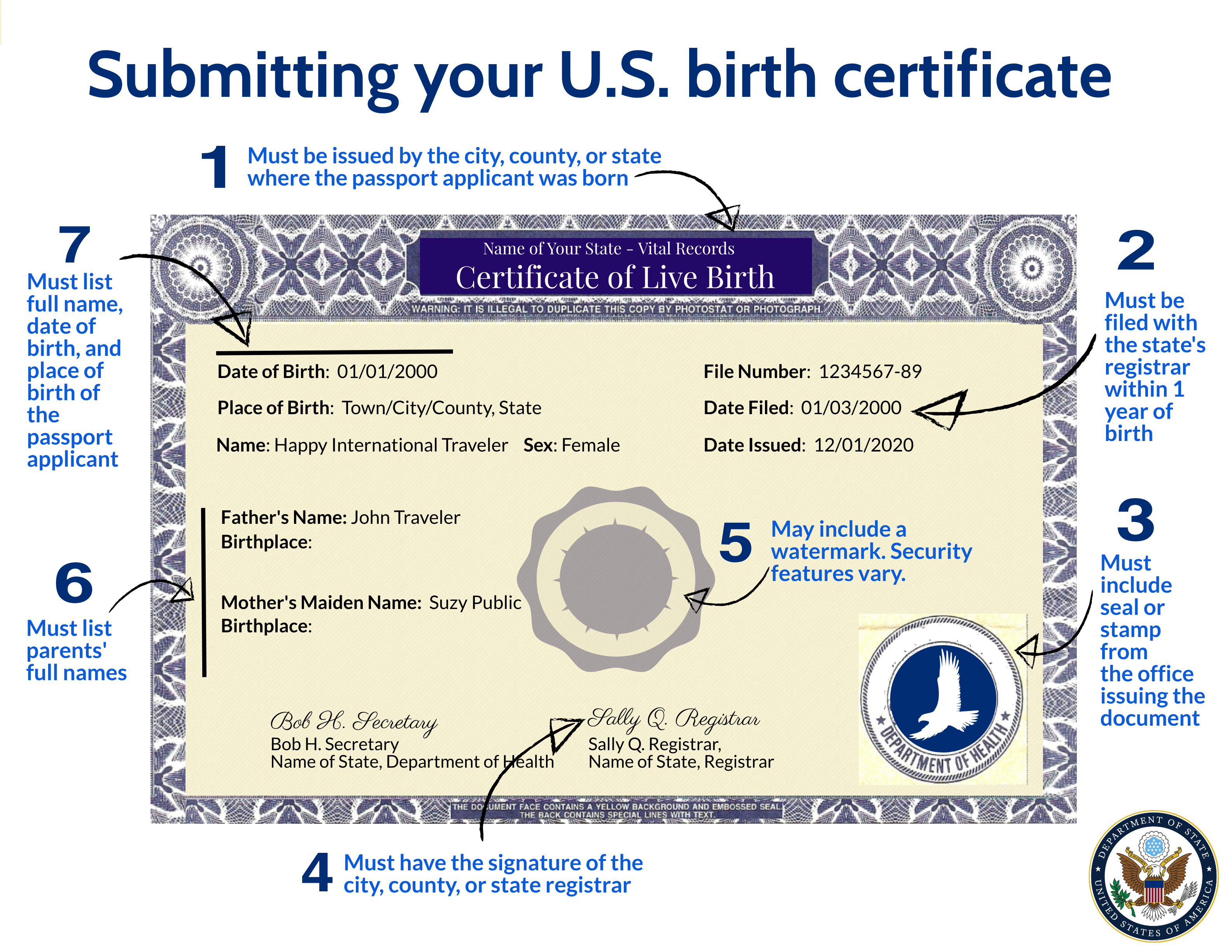
3. Show Your Relationship to Your Child
You must submit a document that lists the parent(s) or legal guardian(s) of the child. Examples include:
- U.S. birth certificate (also evidence of U.S. citizenship)
- Foreign birth certificate
- Adoption decree
- Divorce or custody decree
- A court order
Some documents, like a U.S. birth certificate, show both U.S. citizenship and parental relationship. These documents must be originals or certified copies (not photocopies).
You and your child may have different last names, as long as the document showing your relationship to your child lists your full name.
If your name is different than the one on the document showing your relationship to your child, submit proof of your legal name change.
4. Get a Photo ID (and a photocopy)
Both parents or guardians must bring a physical, photo ID and a photocopy of it. If your photo ID is from a different state than the state in which you are applying, bring a second photo ID.
You must show at least one of these photo IDs:
- Valid or expired, undamaged U.S. passport book or passport card
- In-state, fully valid driver's license or enhanced driver's license with photo
- Certificate of Naturalization
- Certificate of Citizenship
- Government employee ID (city, county, state, or federal)
- U.S. military or military dependent ID
- Current (valid) foreign passport
- Matricula Consular (Mexican Consular ID) used by a parent of a U.S. citizen child applicant
- U.S. Permanent Resident Card (Green Card) used by a parent of a U.S. citizen child applicant
- Trusted Traveler IDs (including valid Global Entry, FAST, SENTRI, and NEXUS cards)
- Enhanced Tribal Cards and Native American tribal photo IDs
- In-state, fully-valid learner's permit with photo
- In-state, fully-valid non-driver ID with photo
- Temporary driver's license with photo
If you do not have one of these photo IDs, go to our Identification page for more information.
5. Show More Documents (if both parents or guardians cannot apply)
- Both parents or guardians must approve that we can issue a passport to a child, and go with the child to apply in person.
- If one or both parents or guardians cannot apply in person with their child, you will need to show more documents.
Important : Submit Form DS-3053 and other notarized statements within three months of signing them.
6. Provide a Photo
You must provide one photo with your child's application. Go to our Passport Photo page for photo requirements and to see examples of photos.
- Do not attach or staple your child's photo to the form. The acceptance agent or passport employee will review the photo and staple it to your form.
- Some passport acceptance facilities
- A company which offers photo services
- Home. Ask your friend or family member to take your child's photo. Print it on glossy or matte photo quality paper.
7. Calculate Fees
When applying using Form DS-11, you will pay two separate fees - an application fee and an execution (acceptance) fee. You will pay the application fee to the U.S. Department of State, and the execution (acceptance) fee to the facility which takes your application.
- Add $60 to your application fee if you want expedited service .
- Add $19.53 to your application fee if you want us to ship your completed passport in 1-2 days after we issue it.
Child Applicants :
For more information on how to pay and a full list of fees, go to our Passport Fees page.
*How to fill out your check and pay the application fee to the U.S. Department of State. Please note you must pay a separate execution (acceptance) fee.
Families may write one check or money order to the U.S. Department of State if they are applying at the same time. The check or money order must include the name and date of birth of each applicant.
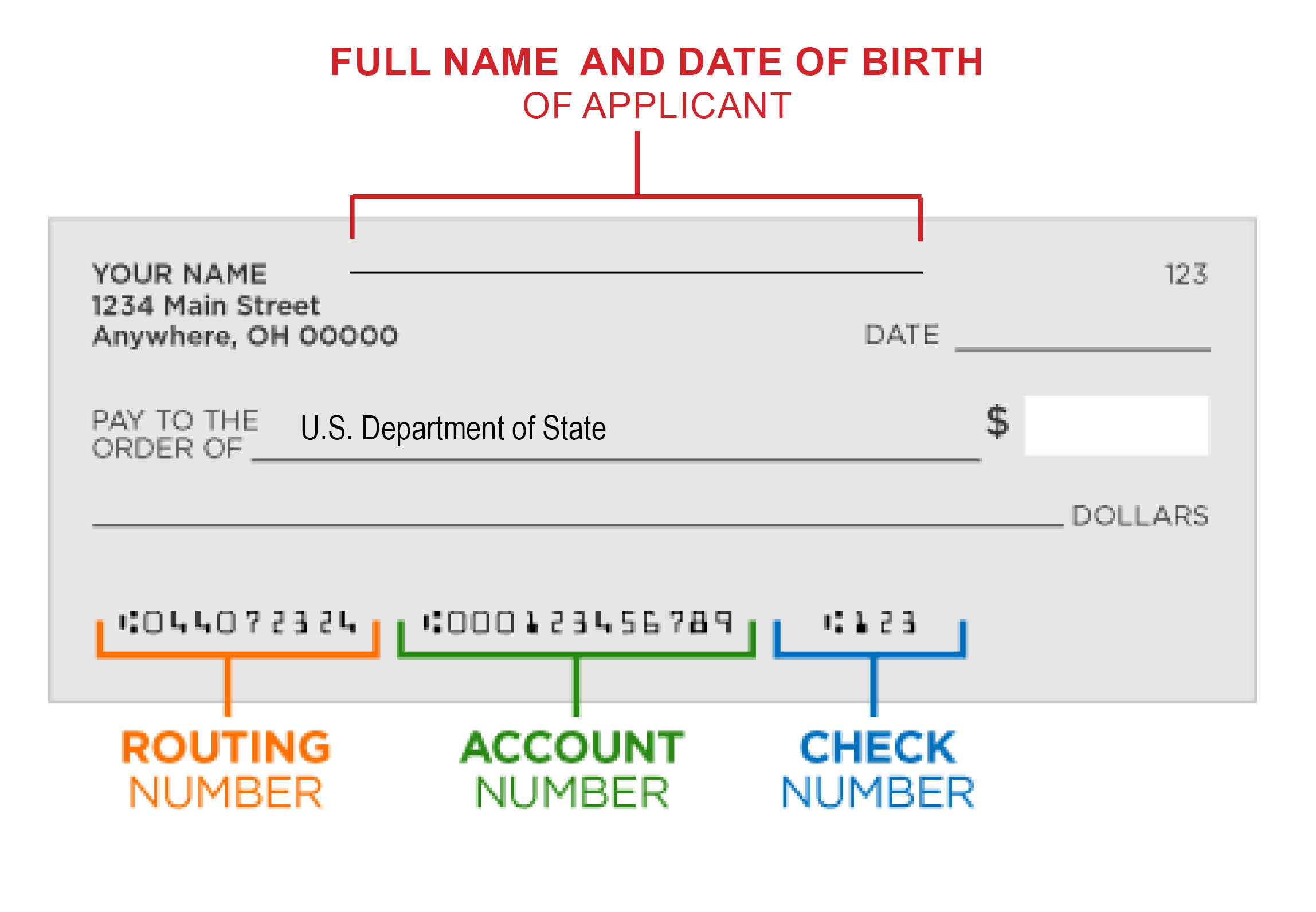
8. Find Location to Apply
In the United States:
- Traveling in more than 3 weeks? Go to a passport acceptance facility such as a post office, library, or local government office. Check with the facility to see if you need to make an appointment.
- Traveling in less than 3 weeks? Make an appointment to apply at a passport agency or center.
In another country:
- Contact your U.S. embassy or consulate .
9. Track Your Application Status
You can subscribe to email updates about your application status, and learn more about each status update .
It may take 2 weeks from the day you apply until your child's application status is “In Process.”
Frequently Asked Questions
How will you send my child's passport and supporting documents.
You will get multiple mailings. The number of mailings depends on what document(s) you asked for.
Passport Book : You may get your new passport and citizenship documents in two mailings. You may wait 8 weeks after getting your passport before you get a second mailing with your citizenship documents. We will return the passport book using a trackable delivery service.
Passport Card : You may get your new passport card and your citizenship documents in two mailings. You may wait 8 weeks after getting your passport before you get a second mailing with your citizenship documents. We only send the passport card via First Class Mail. We do not send cards using 1-2 day delivery services.
Both a Passport Book and Card : You may get three separate mailings:
- New passport book
- New passport card
- Citizenship documents
Contacting Us : If you have been waiting more than 8 weeks for your documents, call us at 1-877-487-2778 to report that you have not received your documents.
If you want us to reimburse you for a lost supporting document, you must contact us within 90 days of the date which we mailed your passport. You will also need to provide a receipt to show the cost of replacing the document.
Can I pay for faster delivery and return shipping?
Yes. You may choose one or both of the following shipment options:
- Delivering application to us : Pay for Priority Mail Express for faster shipping. The price for this service varies depending on the area of the country.
- Returning the passport to you : Pay $19.53 for 1-2 day delivery. This means you will receive your passport 1-2 days after we send it. Include this fee with your check or money order payable to the U.S. Department of State. Do not submit a return envelope to us with postage pre-paid.
You may receive your passport and supporting documents in separate mailings. If you are renewing a passport card, we will send it to you via First Class Mail. We do not use 1-2 day delivery services if you only applied for a passport card.
What countries require Form DS-3053 "Statement of Consent" to be notarized at an embassy or consulate?
In certain countries, a DS-3053 must be notarized at a U.S. embassy or consulate and cannot be notarized by a local notary public. Currently, these countries include:
Special Passport Fairs
Find a Special Passport Fair near you!
We're holding special passport fairs all across the United States to help you get your passport more easily. New events are added to our site every week.
Most events are for first-time applicants and children, (who use Form DS-11). If you can use Form DS-82, you can renew by mail at your convenience!
Processing Times
Routine: 6-8 weeks*
Expedited: 2-3 weeks and an extra $60*
*Consider the total time it will take to get a passport when you are booking travel. Processing times only include the time your application is at a passport agency or center.
- It may take up to 2 weeks for applications to arrive at a passport agency or center. It may take up to 2 weeks for you to receive a completed passport after we print it.
- Processing times + mailing times = total time to get a passport
Urgent Travel: See our Get my Passport Fast page.
How to Apply for your Child's Passport
Watch this video to learn how to apply in person for your child's U.S. passport!
External Link
You are about to leave travel.state.gov for an external website that is not maintained by the U.S. Department of State.
Links to external websites are provided as a convenience and should not be construed as an endorsement by the U.S. Department of State of the views or products contained therein. If you wish to remain on travel.state.gov, click the "cancel" message.
You are about to visit:
- Election 2024
- Entertainment
- Newsletters
- Photography
- Personal Finance
- AP Investigations
- AP Buyline Personal Finance
- AP Buyline Shopping
- Press Releases
- Israel-Hamas War
- Russia-Ukraine War
- Global elections
- Asia Pacific
- Latin America
- Middle East
- Election Results
- Delegate Tracker
- AP & Elections
- Auto Racing
- 2024 Paris Olympic Games
- Movie reviews
- Book reviews
- Personal finance
- Financial Markets
- Business Highlights
- Financial wellness
- Artificial Intelligence
- Social Media
Even when Africans want to visit Europe legally, rejection rates are high. Algeria is one example
FILE - Algerians gather outside the visa center of the French Institute in Algiers, Friday May 20, 2024. Visa applicants from Africa who want to visit Europe’s Schengen Area face far higher rejection rates than people from anywhere else in the world. In Algeria, more applicants are rejected than in any other African nation. (AP Photo/Fateh Guidoum, File)
FILE - Children play football in Kasbah of Algiers, a UNESCO world heritage site, Algeria, April 11, 2019. Visa applicants from Africa who want to visit Europe’s Schengen Area face far higher rejection rates than people from anywhere else in the world. In Algeria, more applicants are rejected than in any other African nation. (AP Photo/Mosa’ab Elshamy, File)
FILE - People walk near the Kasbah of Algiers, a UNESCO world heritage site, Algeria, April 11, 2019. Visa applicants from Africa who want to visit Europe’s Schengen Area face far higher rejection rates than people from anywhere else in the world. In Algeria, more applicants are rejected than in any other African nation. (AP Photo/Mosa’ab Elshamy, File)
FILE - Young Algerian women pose next to street art supporting the protest movement in Algiers, Algeria, April 10, 2019. The writing in Arabic reads “The people are the authority”. Visa applicants from Africa who want to visit Europe’s Schengen Area face far higher rejection rates than people from anywhere else in the world. In Algeria, more applicants are rejected than in any other African nation. (AP Photo/Mosa’ab Elshamy, File)
- Copy Link copied
ALGIERS, Algeria (AP) — France has twice rejected visa applications from Nabil Tabarout, a 29-year-old web developer from Algeria who hopes this year to visit his sister there.
He’s among the many people navigating the often arduous visa process throughout Africa, which faces higher visa rejection rates than anywhere else in the world when it comes to visiting Europe’s Schengen Area. Appointments are often difficult to secure. Applicants often must prove a minimum bank balance, substantiate the purpose of their visit and prove they plan to return home.
“That’s how it is. Every pleasure deserves pain,” said Tabarout, who has succeeded just once in obtaining a French visa.
Though much of Europe’s debate about migration centers on people who arrive without authorization, many more people choose to come by legal means. It’s painful, then, to discover that following the rules often fails.
The disproportionate rejection rates — 10% higher in Africa than the global average — hinder trade, business and educational partnerships at the expense of African economies, according to an April study from U.K.-based migration consultancy firm Henley & Partners.
The study called the practices discriminatory and urged Schengen countries to reform them.
Nowhere are applicants more rejected than in Algeria, where more than 392,000 applicants were rejected in 2022. The 45.8% rejection rate is followed by a 45.2% rejection rate in Guinea-Bissau and 45.1% in Nigeria.
Only one in 25 applicants living in the United States were rejected.
While the study found that applicants from poorer countries experienced higher rejections in general, it noted that applicants from Turkey and India experienced fewer rejection than applicants from the majority of African countries.
The reasons for that anti-Africa bias could be political, according to the study’s author, Mehari Taddele Maru of the European University Institute’s Migration Policy Center. Visa rejections are used as a political tool by European governments, including France , to negotiate the deportation of those who migrate to Europe without proper authorization. North African governments have refused to provide consular documents for their citizens facing deportation.
In an interview, Maru said Algeria has continent-high rejection rates because its number of applicants outpaces those from other African countries for geographic, economic and historical reasons. Many Algerians apply for visas in France, where they speak the language and may have family ties. And North Africa’s proximity to Europe means flights are short and cheap compared to flights from sub-Saharan Africa, leading more people to apply, he said.
Beyond rejection rates, the difficulty of applying is also a policy choice by European governments, Maru said. “When we talk about increasing barriers for potential applicants, it’s not only the rate of rejections, it’s also the restrictions to apply.”
That means the challenges can be local too.
For Algerians like Tabarout, VFS Global is a new player in the visa application process. The subcontractor was hired by French consular authorities after years of criticism about the previous system being dominated by a so-called “visa mafia.”
Applicants previously faced challenges securing time slots, which are quickly reserved by third-party brokers and then resold to the public — similar to how scalpers have dominated concert platforms. Rumors swirled about intricate computer programs connecting to appointment platforms and gobbling up slots within moments.
“They’re a bunch of swindlers who’ve been at it for years, making fortunes on the backs of poor citizens by making them pay dearly to make an appointment to apply for a visa,” asserted Ali Challali, who recently helped his daughter submit a French student visa application.
Under the previous system, applicants told The Associated Press they had to pay 15,000 to 120,000 Algerian dinars (103 to 825 euros) just to get an appointment.
In Algeria, many decide to pursue opportunities in France after not finding adequate economic opportunities at home or seek residency after going to French universities on student visas. According to a 2023 report from France’s Directorate General for Foreign Nationals, 78% of Algerian students “say they have no intention of returning to Algeria” upon finishing their studies.
The visa issue has historically been a cause of political tensions between the countries. Algerian President Abdelmadjid Tebboune is scheduled to visit France later this year.
“Everything that can contribute to increasing trade between France, Europe and Algeria must be facilitated in both directions,” French Ambassador Stephane Ramotet said at a recent economic conference in Algiers. “Algerians who want to go to France to develop a business must be able to benefit from all the facilities, particularly visas.”
Follow AP’s coverage of migration at https://apnews.com/hub/migration

IMAGES
VIDEO
COMMENTS
Write a brief newsletter about the design project that includes key findings from the visit. SAMPLE FACILITY FACT SHEET (see PDF version) CHAPTER 3: CRITICAL ISSUES IN CONDUCTING FACILITY VISITS . SELECTING VISIT SITES. One of the most important steps in conducting healthcare facility visits is the selection of appropriate sites.
For example: Does the tour need to visit every part of your facility? If there's a specific purpose defined, you may find a better path, rather than touching on the necessities. A plant map helps in this planning. Knowing what areas the tour will visit helps determine whether PPE (personal protective equipment) must be supplied to the attendees.
A site visit report is a formal document that provides a detailed account of a visit to a particular location or project site. It records the observations, activities, conditions, discussions, and any deviations or issues identified during the visit. The report often includes recommendations or action items based on these findings.
1. Add a title page to the beginning of your report. The title should be the name of the visit and site, such as "Visit to Airplane Factory" or "Corporate Headquarters Visit Report." Under the title, include your name, your institution, and the date of the visit. Do not put any other information on this page.
Step 3: Make each station a destination. Each station stop on the tour should be clearly marked with signage or a display. The idea is to make the station a destination. You can have some fun here. Maybe the displays are made from the same materials your product is made from and incorporate that stage of the process somehow.
Interviews with healthcare and design professionals revealed three goals for facility visits: (1) learning about state-of-the- art facilities, (2) thinking about a project in new ways and (3) creating an effective design team. Designers and clients alike almostwithout exception feel that visits are a valuable resource.
Alert the plant manager and staff of an upcoming tour. Perform a top-to-bottom cleaning and safety inspection. Dress for success with company attire in neutral business colors and with branded logos, if possible. Have enough safety supplies, protective gear, and product samples on hand. Provide refreshments and snacks before or after the tour.
Step 3: The Follow-Up. After the tour, take time for extra questions. Depending on the facility, it might be a good idea to take a tour survey on their satisfaction with the facility and what it may offer them. If appropriate for the industry, this would be the time to do a potential activity. If the tour is for a client/customer, make sure to ...
To help organize their thoughts and shift their focus to "slow medicine," 1 we developed a standardized clinician documentation tool for nursing home care. Our goal was to better identify the ...
Why (and How) to Take a Plant Tour. by. David M. Upton. and. Stephen E. Macadam. From the Magazine (May-June 1997) In recent years, managers have recognized how manufacturing capabilities ...
For example, patients in an acute care rehab center may not have any scheduled rehabilitation after 6 PM but will require quiet hours in the evening to rest. And although many facilities are currently limiting visitors to one at a time, laboring mothers may choose to have both their partner and a doula present for their child's birth, if ...
facility tour when the member is in the home district and offer several dates, possibly during a special event at your facility. The BEST time to schedule a tour is during campaign season, when the legislator is actively looking to meet with constituents. See sample invitation at end of guide. Get to Know Your Legislators
A visit report is an essential document that captures the details and outcomes of a business visit. In this guide, we'll provide a comprehensive overview of how to create a visit report, complete with examples and templates. Whether you need to draft a Report Form or a detailed Trip Report, this guide will walk you through each step.
Think time first. If your total time spent on a visit appropriately credits you for level 3, 4, or 5 work, then document that time, code the visit, and be done with it. But if it does not, go to ...
Use the Facility Visit Checklist (forms LIC 9118 - 9123) for the appropriate facility type to review the file. These forms include directing the Licensing Program Analyst to verify that all applicable licensing fees have been paid. Failure to pay licensing fees may be grounds for forfeiture of the license.
Free Industry Visit Report Templates (Excel / Word / PDF) Posted on January 19, 2024 by Ryan Duffy. When an individual visits the industry whether he or she is a student or an employee, they need an industry visit report template to create a visit report. This document contains a detailed summary of the visit organized in a sequence.
An example of a medically necessary, subsequent note (in the SOAP format) prior to the initial visit might be: S: Acute visit; asked to see pt for a blister on her right upper abdomen, it opened and is described as dry, scabbed with mild redness at the site. ... Bill the annual nursing facility visit using CPT ...
How to Write a Letter Requesting a Visit. The first step in arranging to visit a center recognized in your specialty is a letter requesting permission. Whether you are planning to work there, to ask for a fellowship, or to simply pay a short informal visit to a center of excellence, you will have to get in touch with the hospital and obtain ...
This facility maintenance checklist template for workplace buildings is best used when performing scheduled inspections of the workplace's safety, plumbing, lighting, electrical, and Heating, Ventilation, and Airconditioning (HVAC) systems along with the building's interior and exterior condition. Inspection template.
Outpatient facility coding is the assignment of ICD-10-CM, CPT ®, and HCPCS Level II codes to outpatient facility procedures or services for billing and tracking purposes.Examples of outpatient settings include outpatient hospital clinics, emergency departments (EDs), ambulatory surgery centers (ASCs), and outpatient diagnostic and testing departments (such as laboratory, radiology, and ...
A patient visit summary is a concise document generated after a clinical appointment or hospital visit. It summarizes the significant aspects of the visit, including diagnoses, treatments administered, medications prescribed, and follow-up care instructions. This document is designed to be an accessible and clear record for both the patient and ...
A visit to your esteemed organization would undoubtedly enhance my understanding and positively impact the way we operate. I assure you that any information shared during the visit will be treated with utmost confidentiality and used solely for the purpose of improving our business relationship and practices. Thank you for considering my request.
Facility Visit. Sample Clauses. Facility Visit. During the Term, Century's representatives may visit each applicable FCDI facility at which the Services have been performed or are being performed with reasonable frequency during normal business hours to observe the progress of the Services. Century shall provide no less than fifteen (15 ...
Business hours are Monday through Friday from 8 a.m. to 4 p.m. Hospital staff are available to answer questions and help with procedures at (610) 670-4145. Referral information and accompanying clinical justification must be received from an approved referral source before consideration for admission may proceed.
CHIPS for America encompasses two offices responsible for implementing the law: The CHIPS Research and Development Office is investing $11 billion into developing a robust domestic R&D ecosystem, while the CHIPS Program Office is dedicating $39 billion to provide incentives for investment in facilities and equipment in the United States.
We offer catering packages perfect for your next birthday party, company event, fundraiser or social get-together! Parties & Events. Come Play Around at one of our premier entertainment venues featuring fun golf games for all skill levels, a full-service bar and restaurant, climate-controlled bays and private event spaces.
Apply for a Child Under 16. Both parents or guardians must approve that we can issue a passport to a child, and go with the child to apply in person. If one or both parents or guardians cannot apply with their child, you will need to show us more documents. You cannot renew your child's passport using Form DS-82.
Texas Department of Family and Protective Services (DFPS)
Updated:6:35 PM EDT May 30, 2024. ATLANTA — U.S. Senator Jon Ossoff visited the USPS Atlanta Regional Processing Facility in Palmetto on Thursday amid delays. Ossoff made remarks after the tour ...
Visa applicants from Africa who want to visit Europe's Schengen Area face far higher rejection rates than people from anywhere else in the world. Menu. ... Algeria is one example. 1 of 4 | ... "Algerians who want to go to France to develop a business must be able to benefit from all the facilities, particularly visas." ...